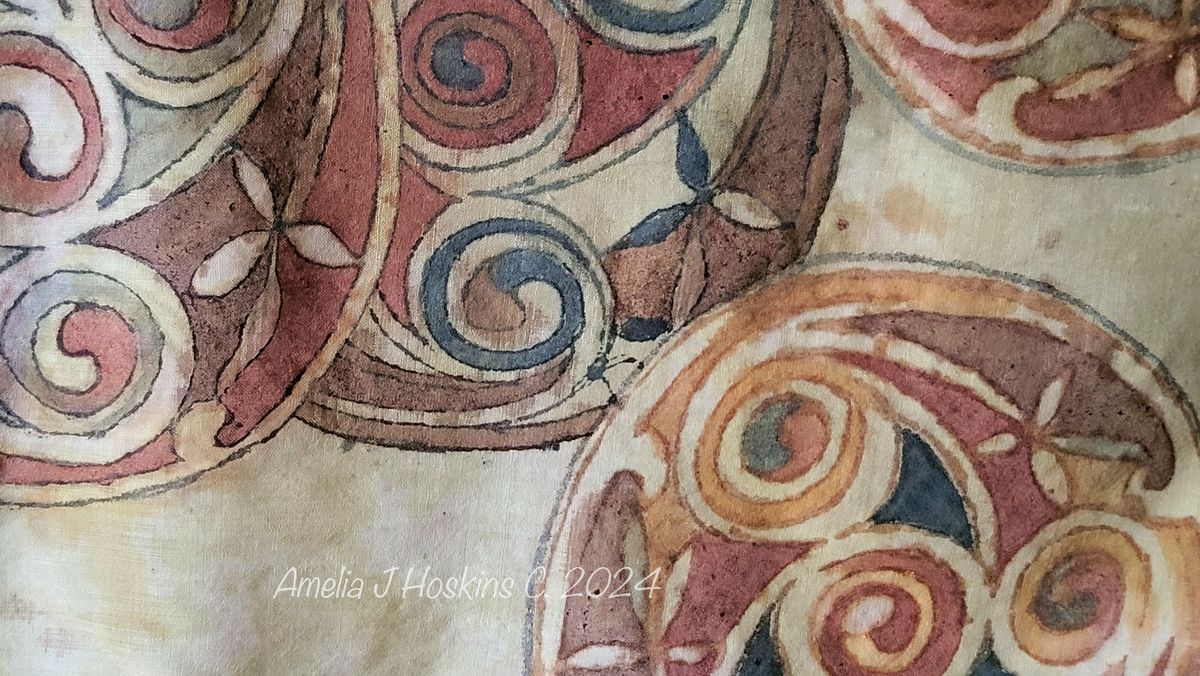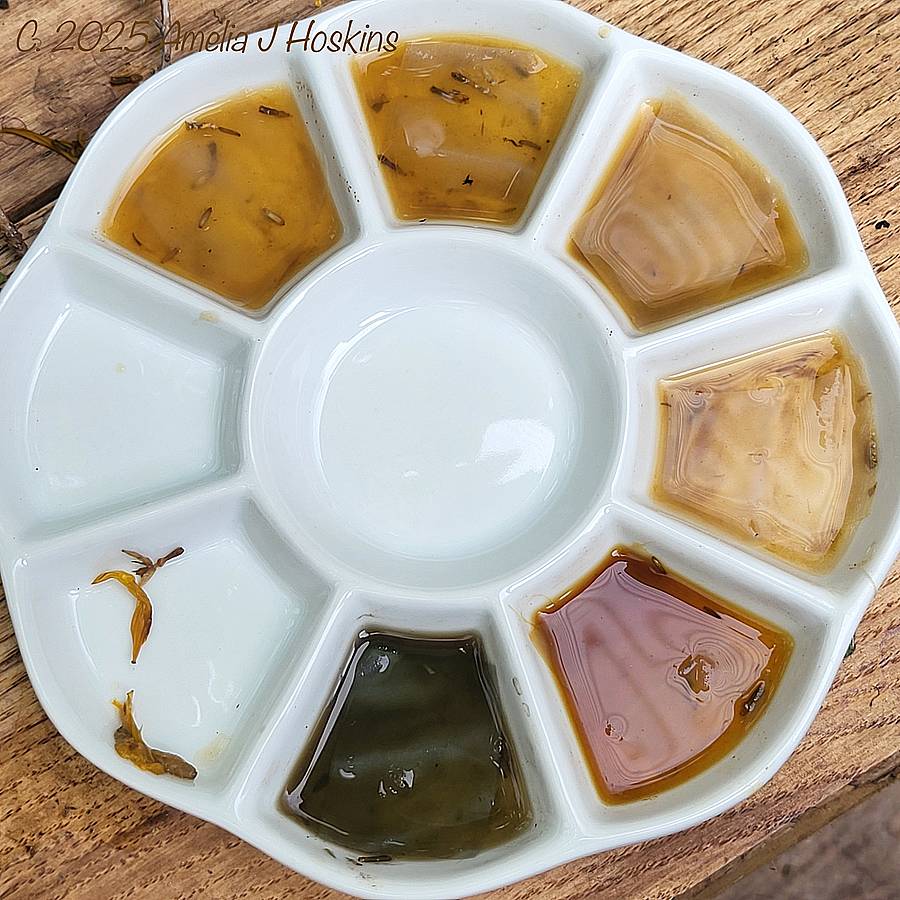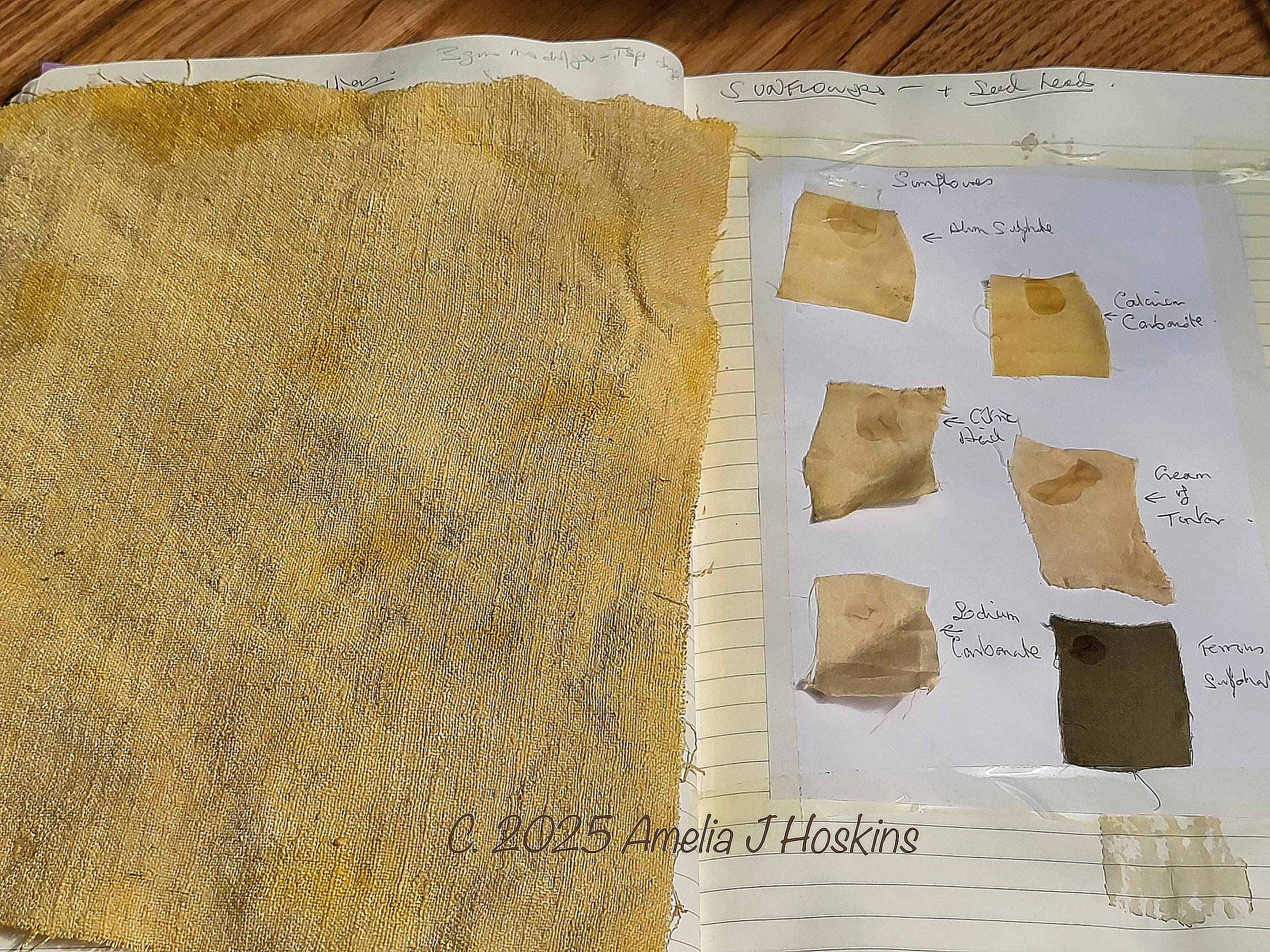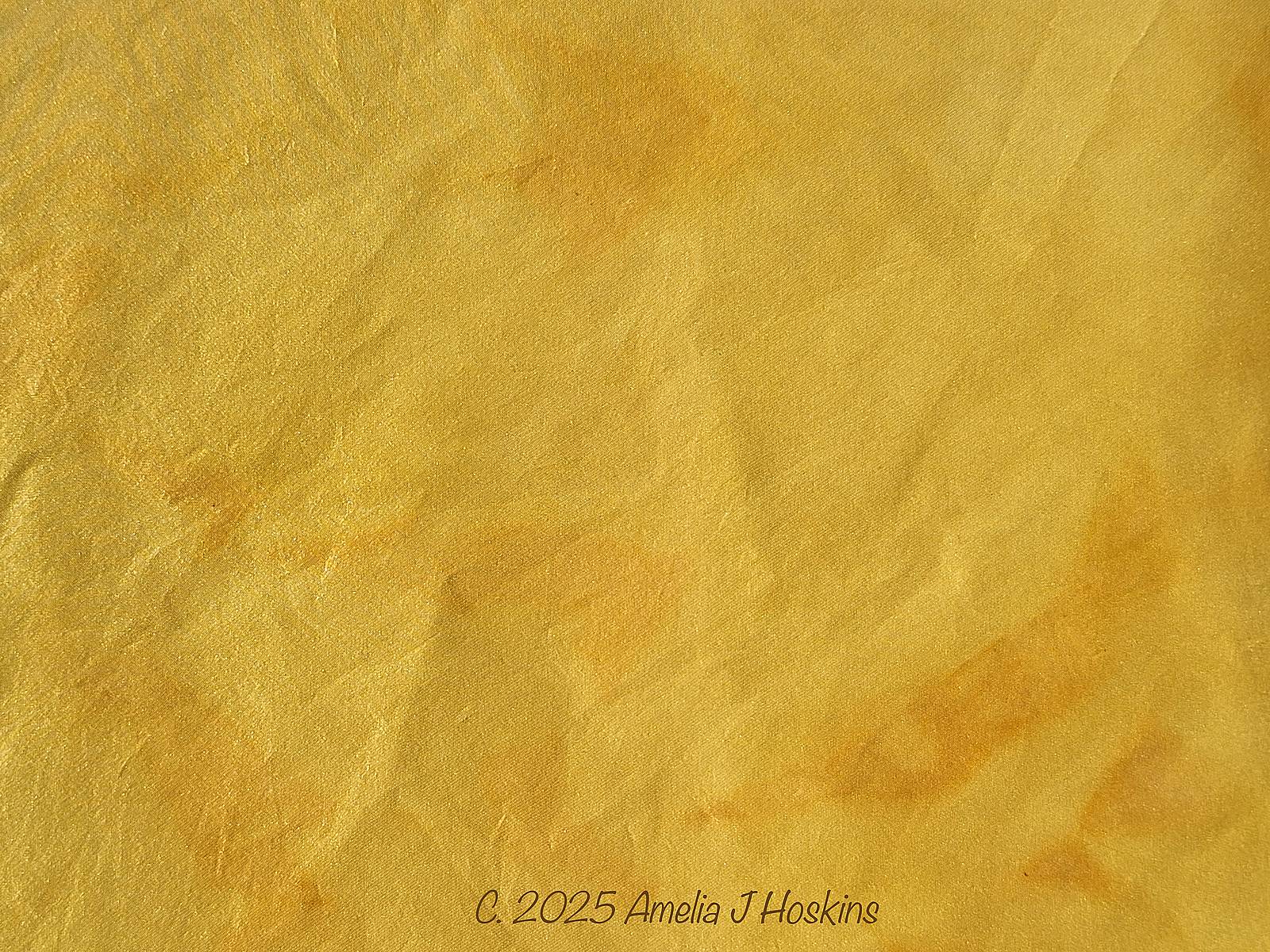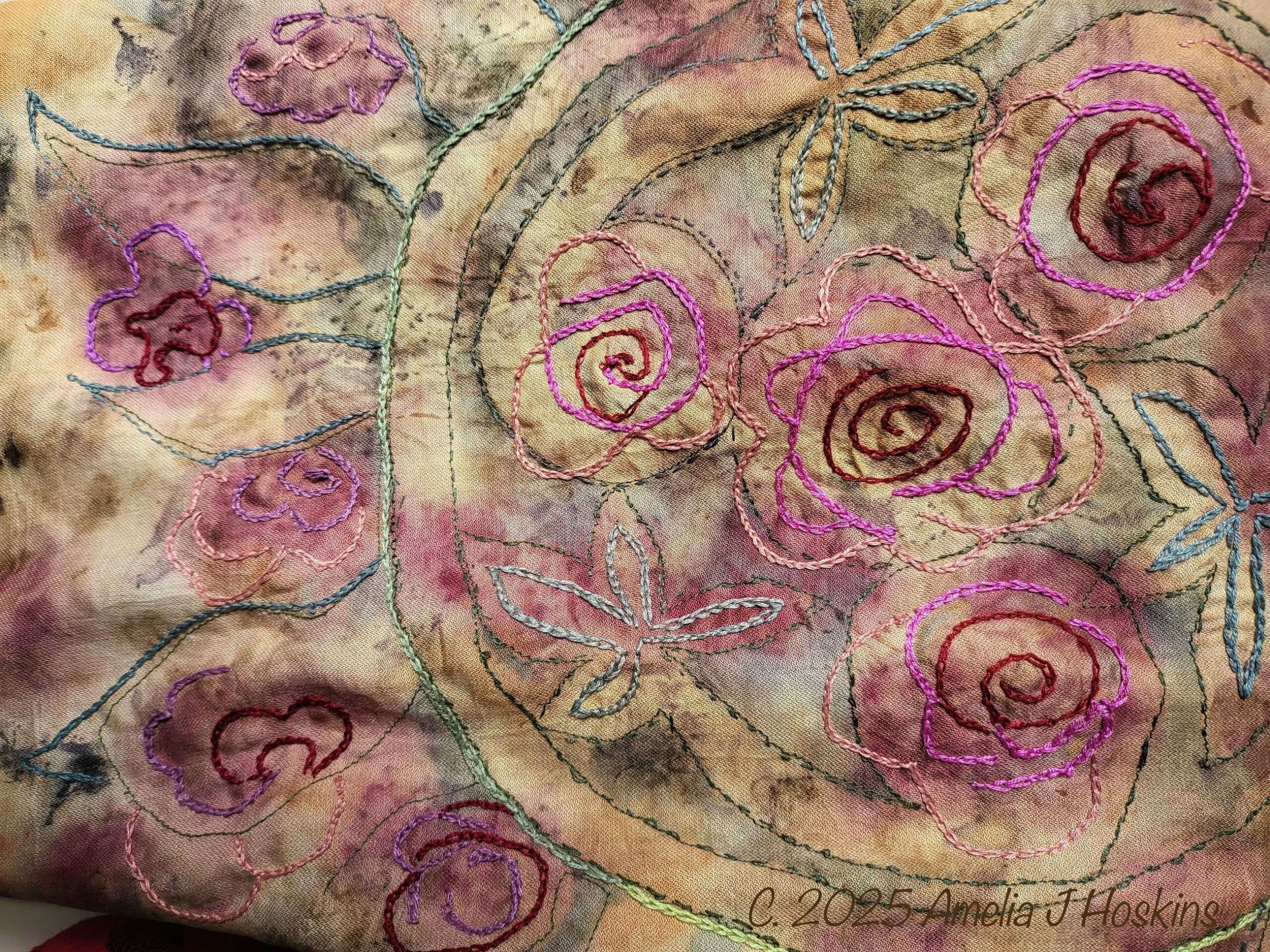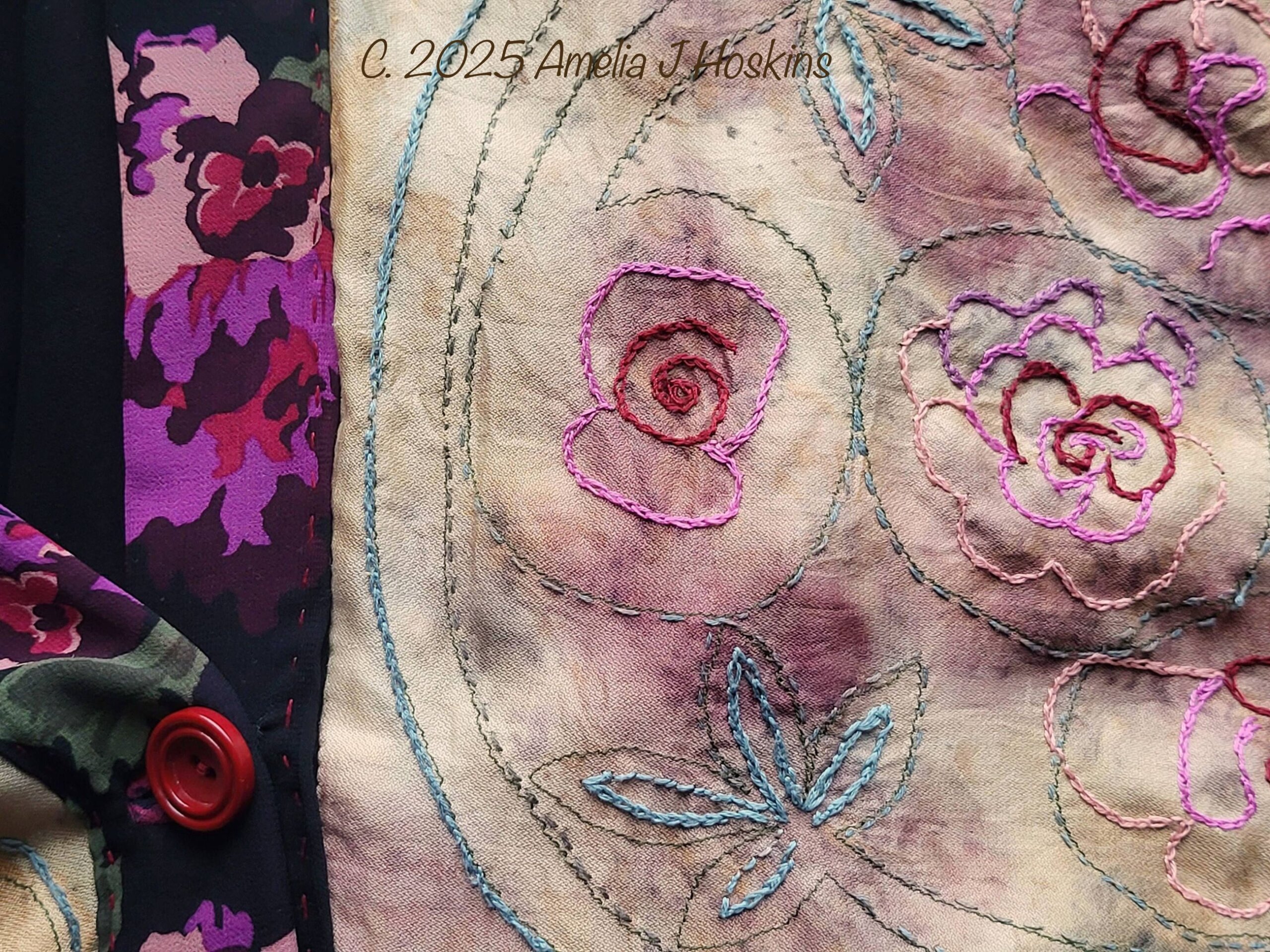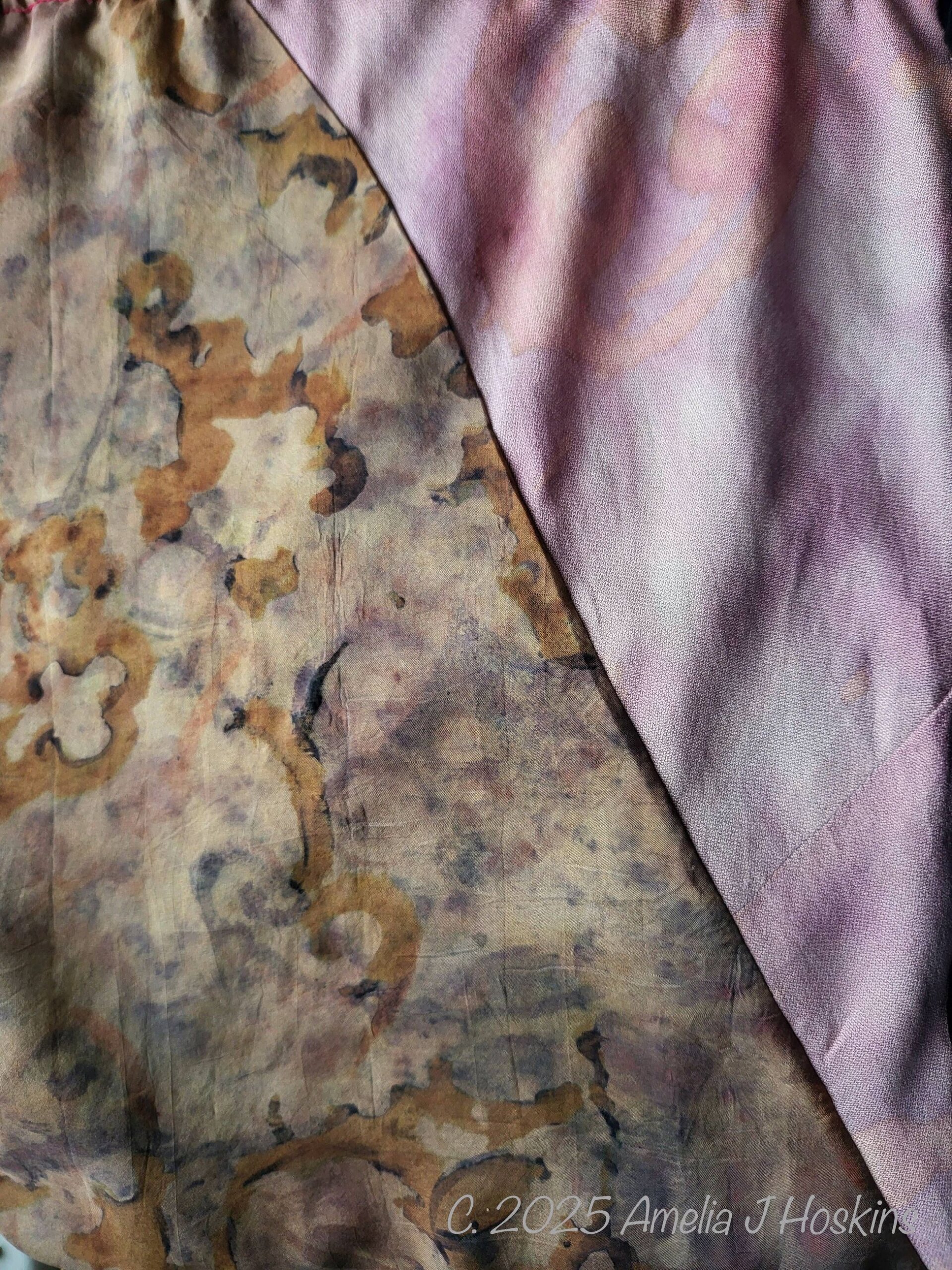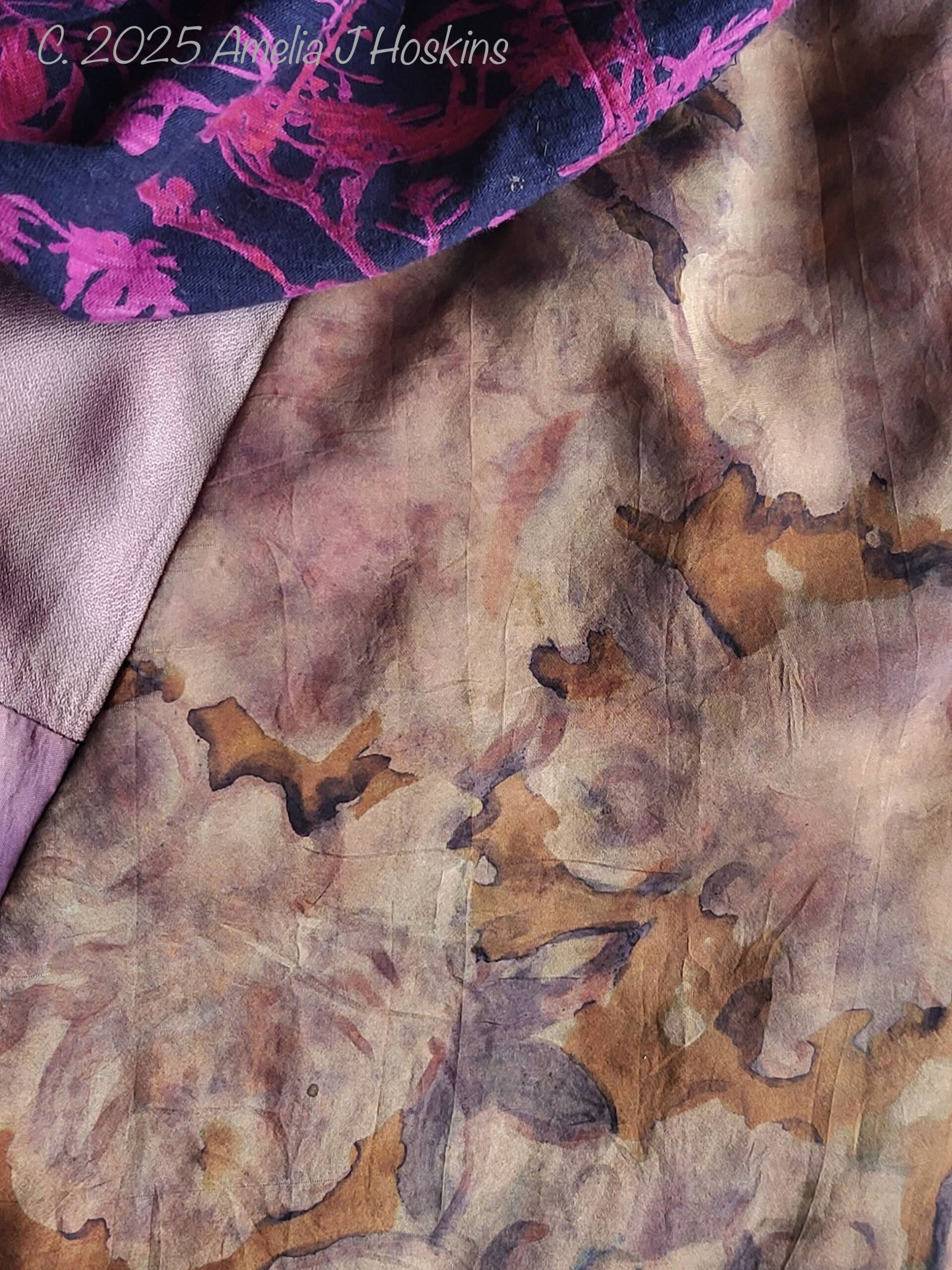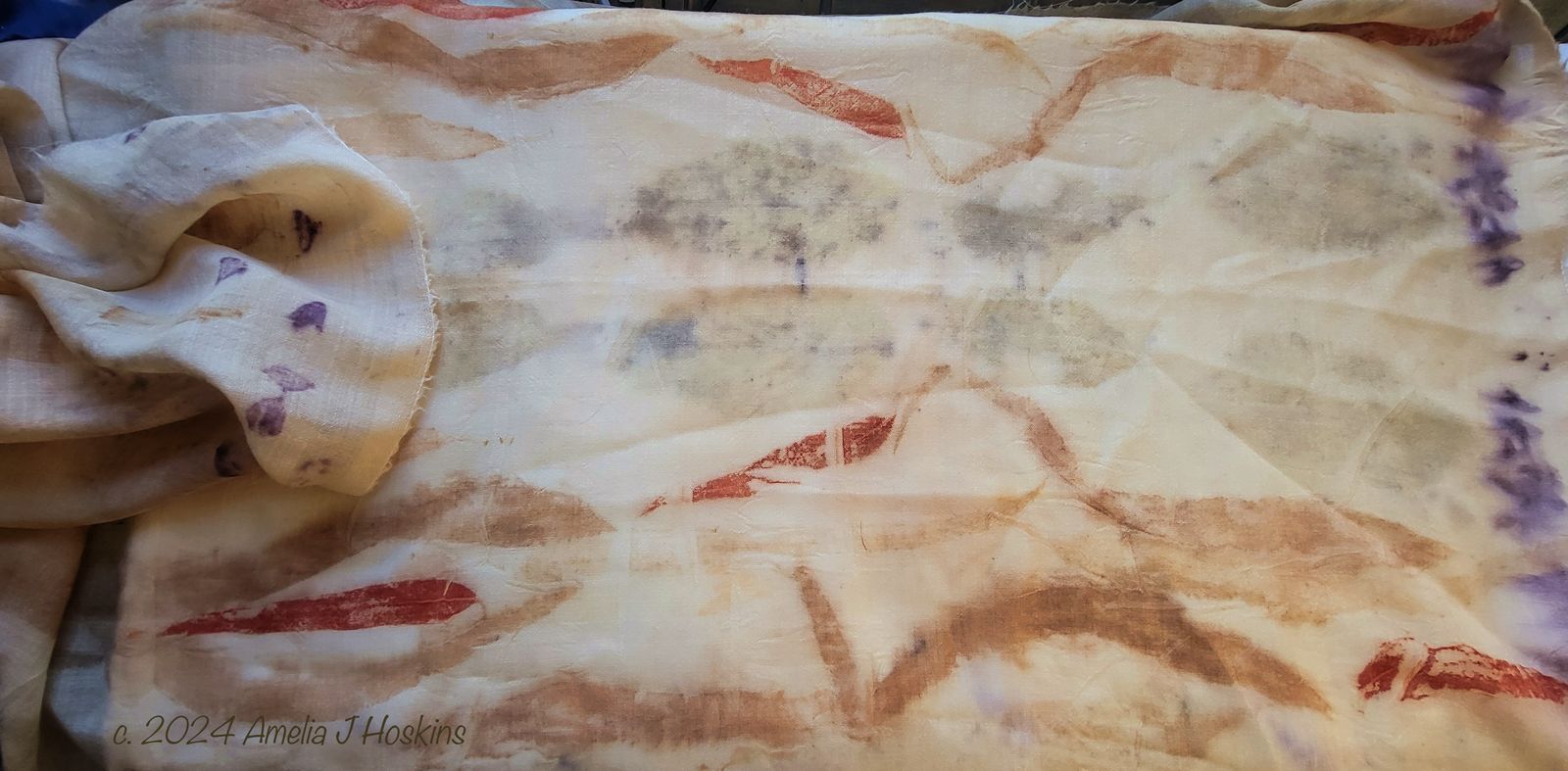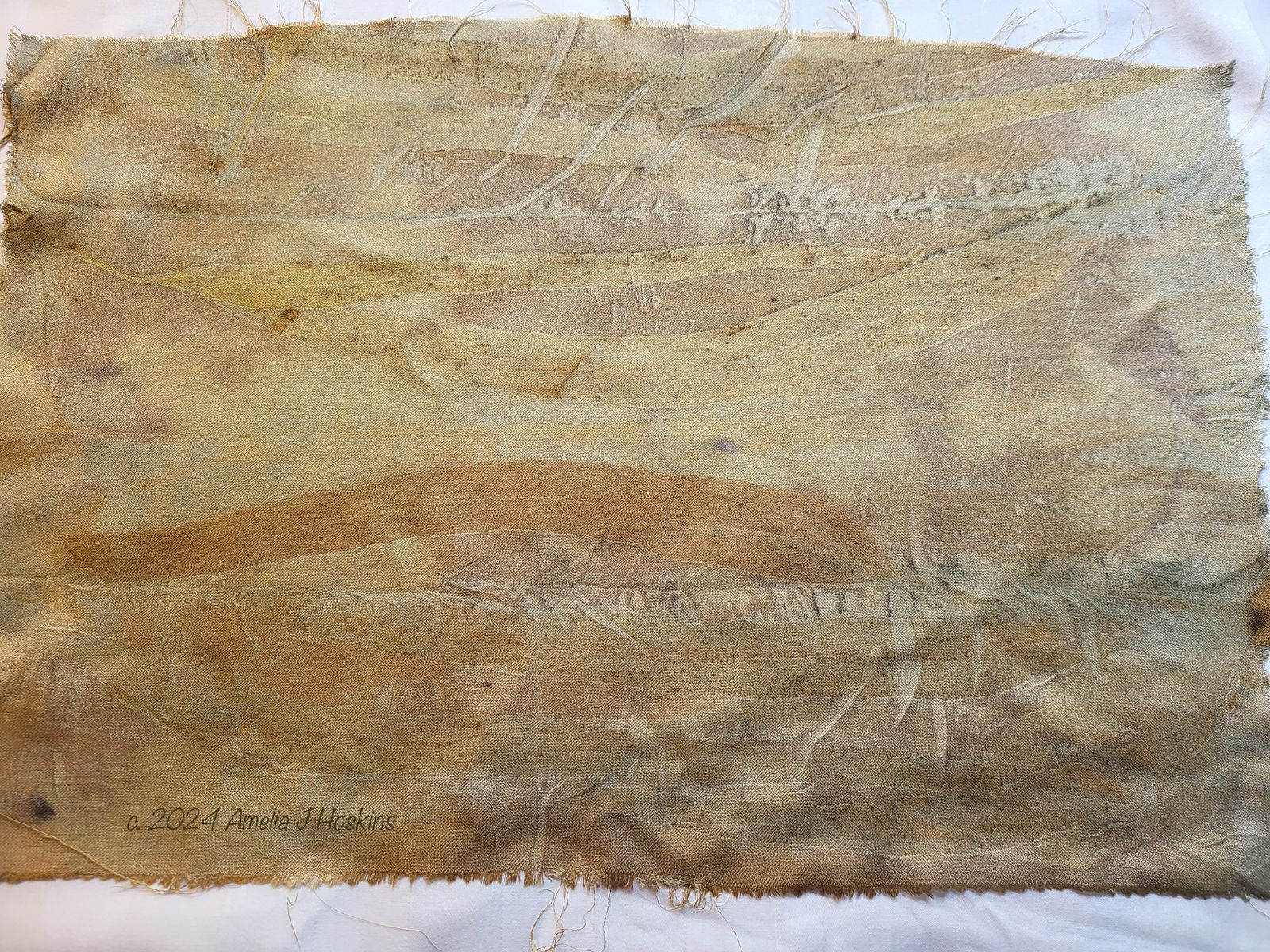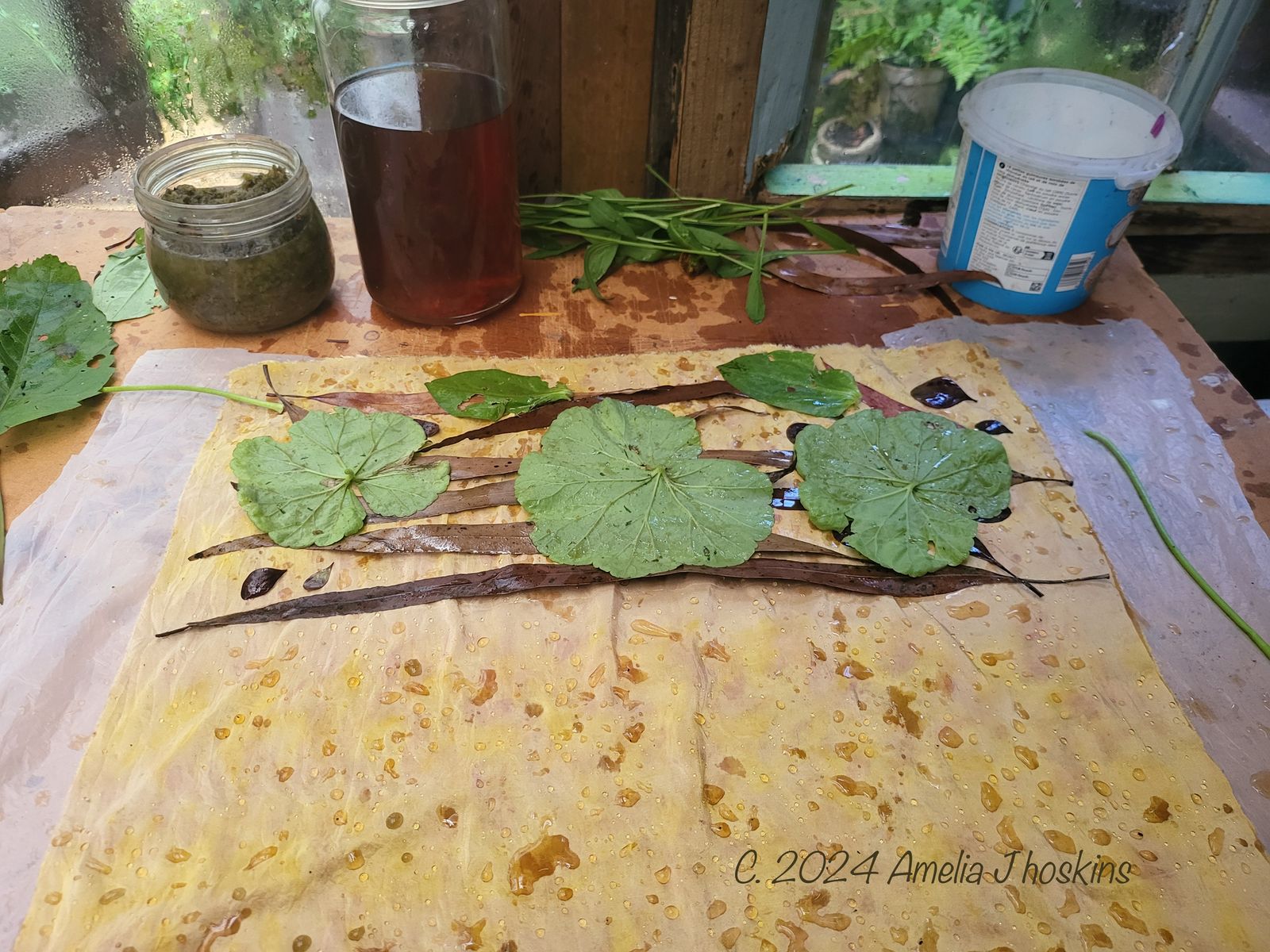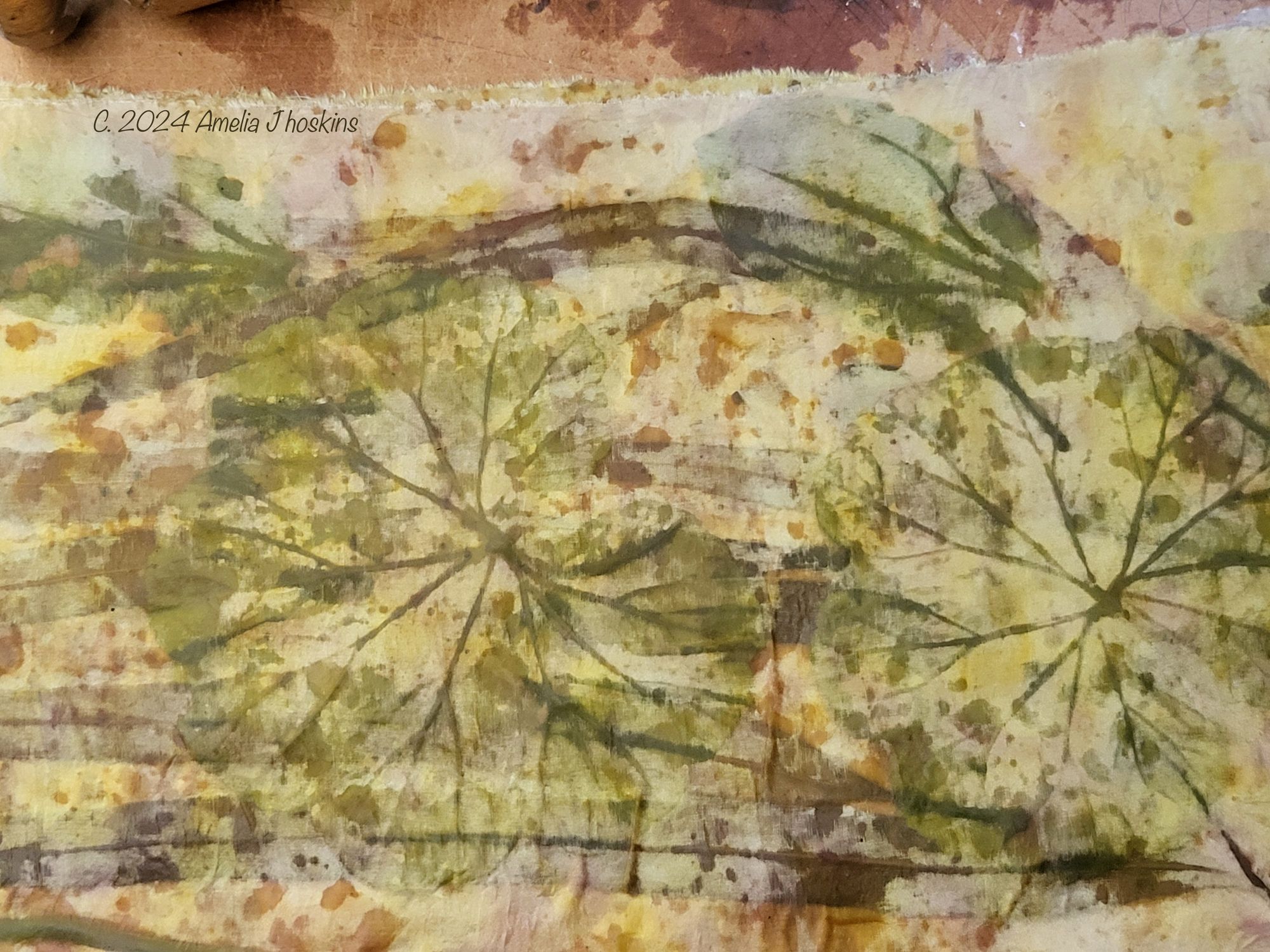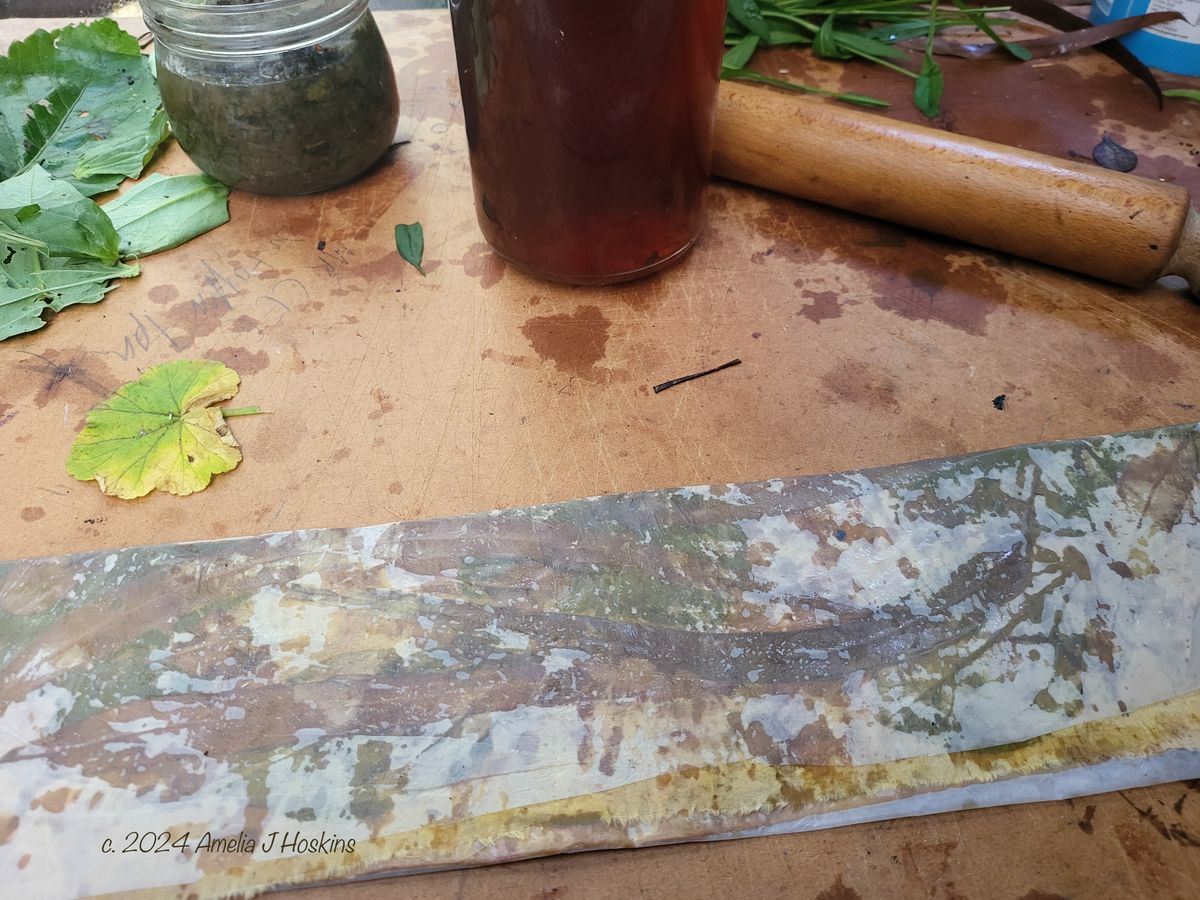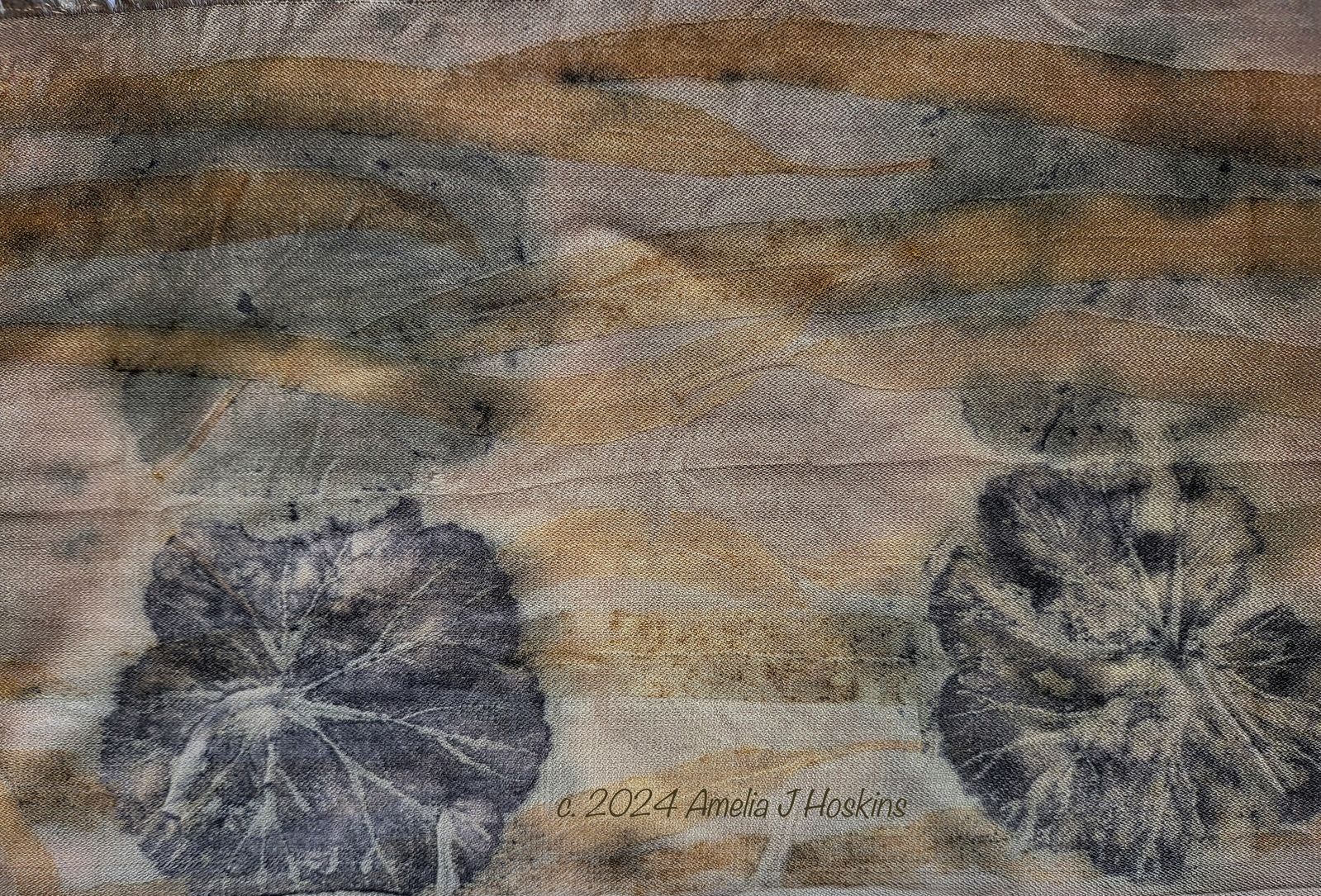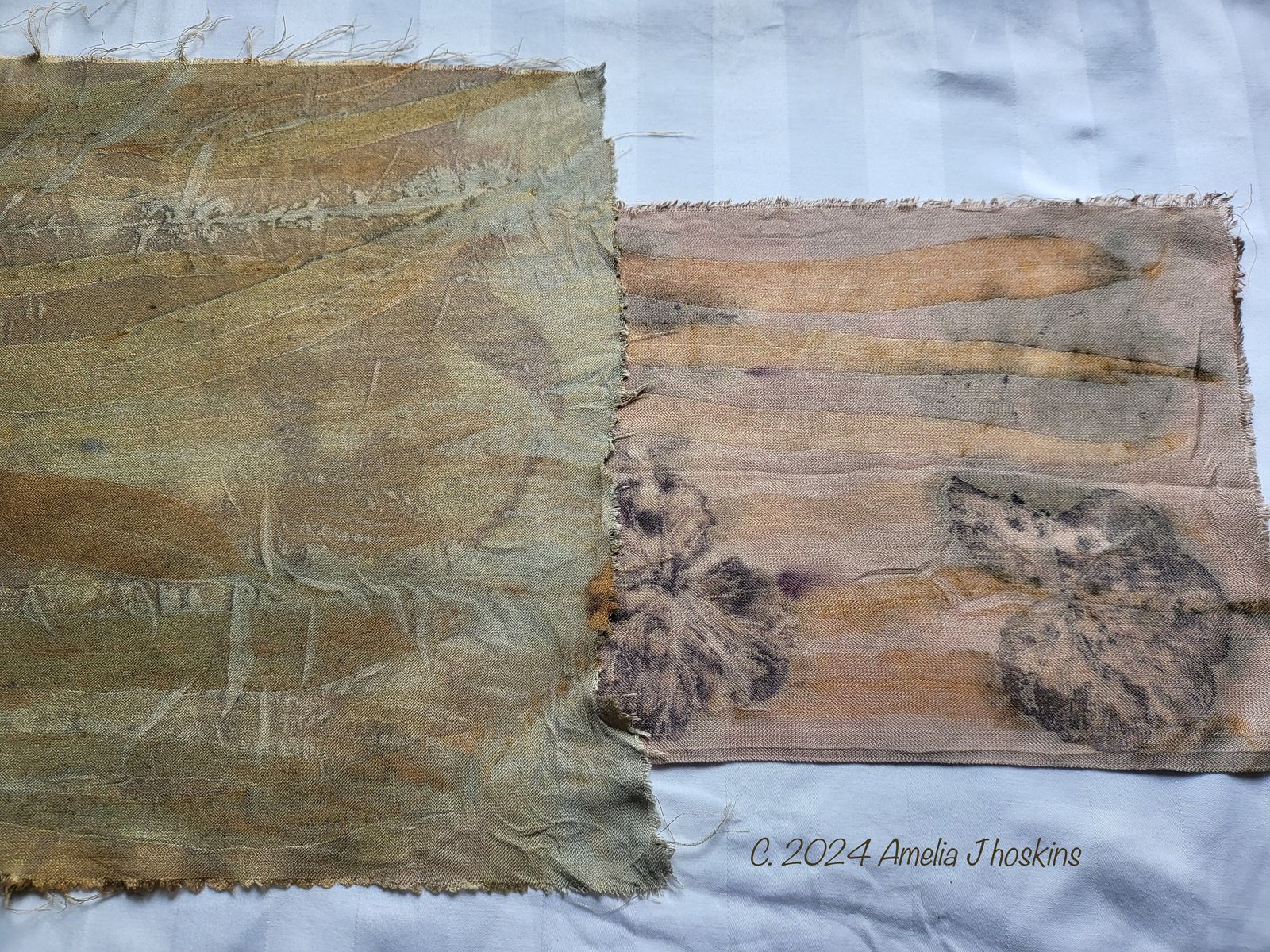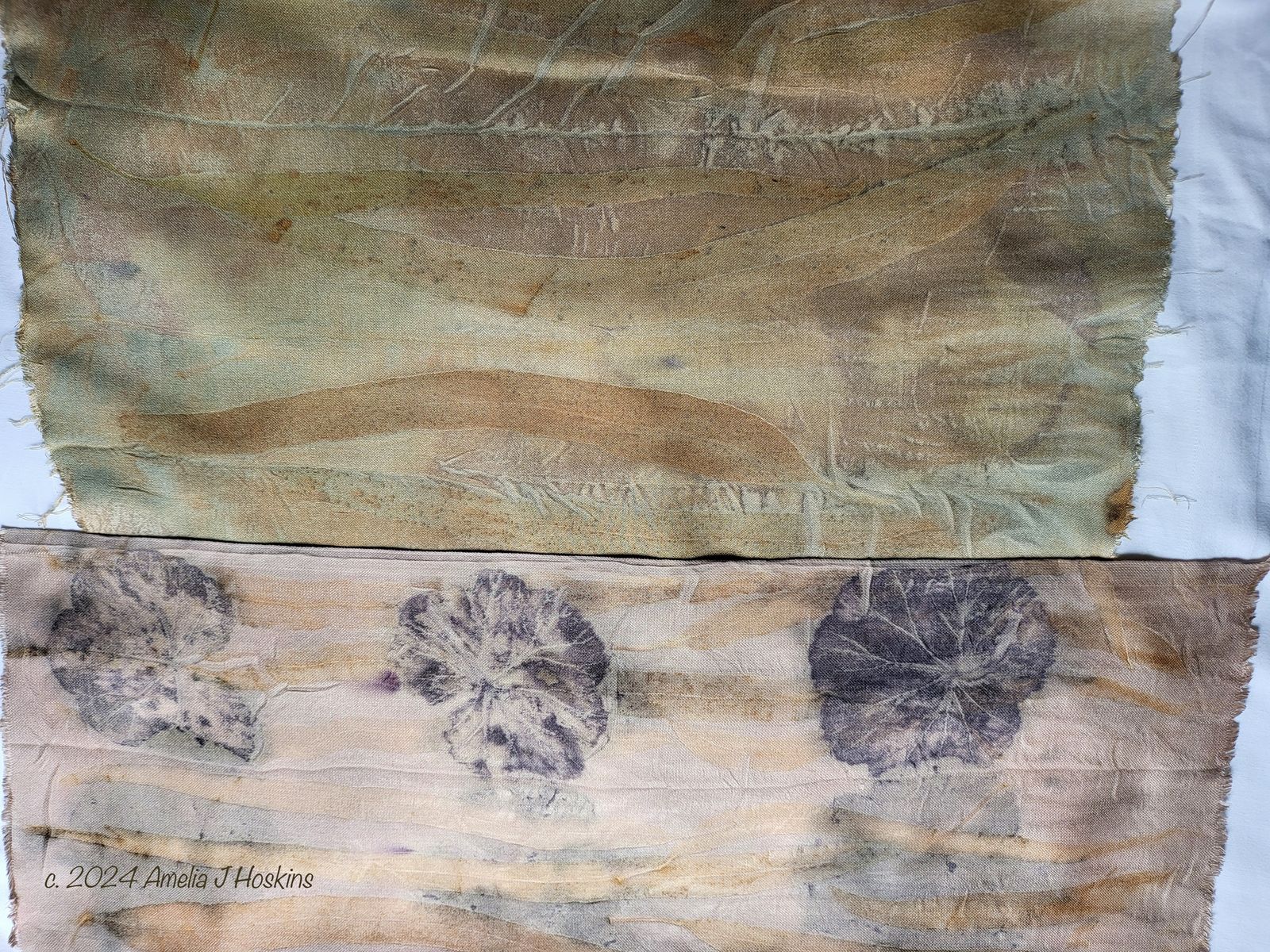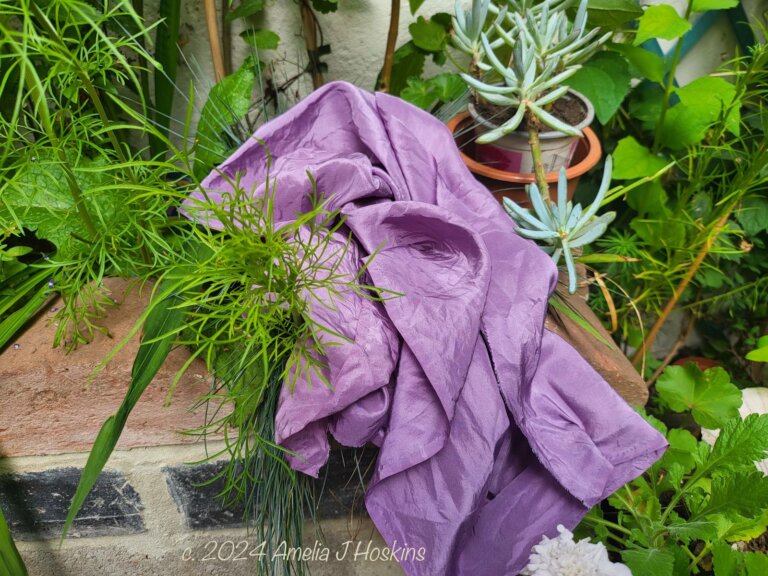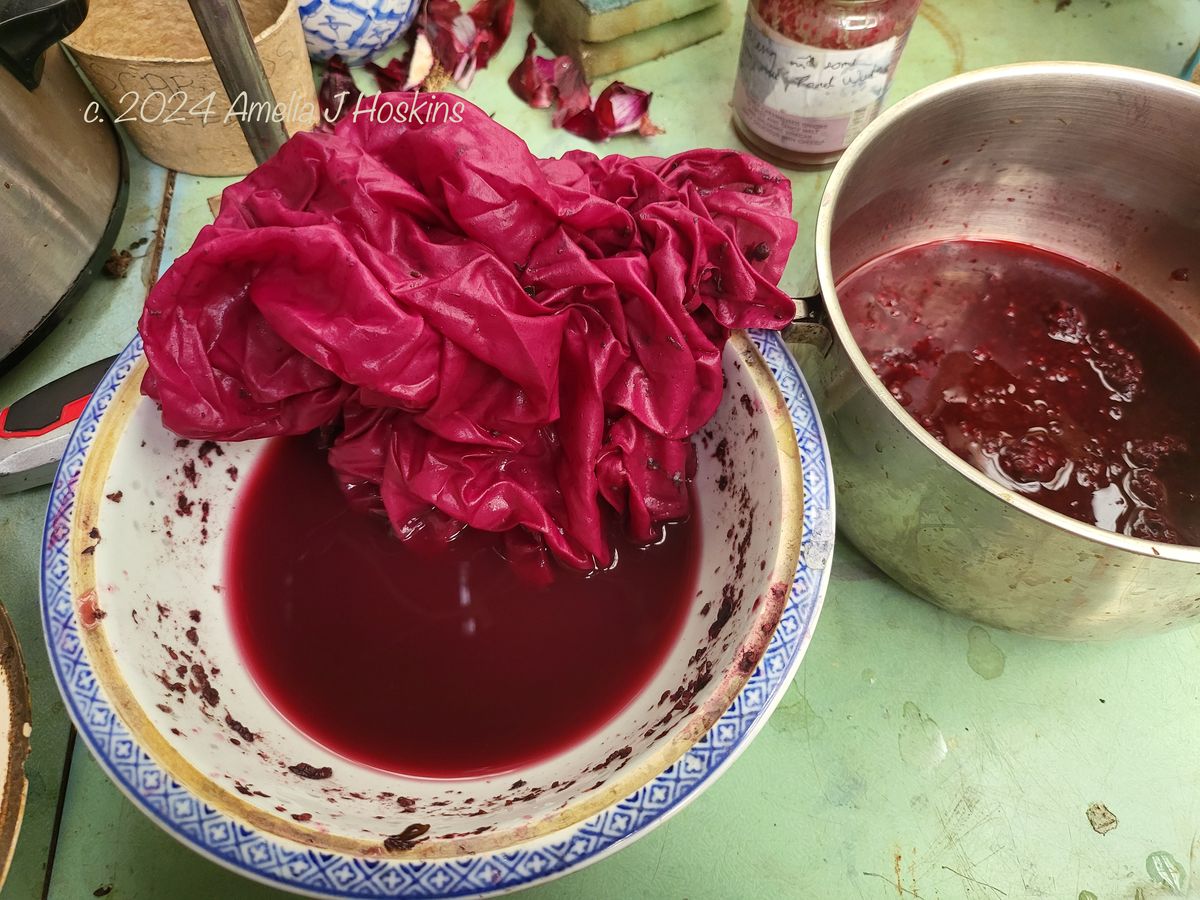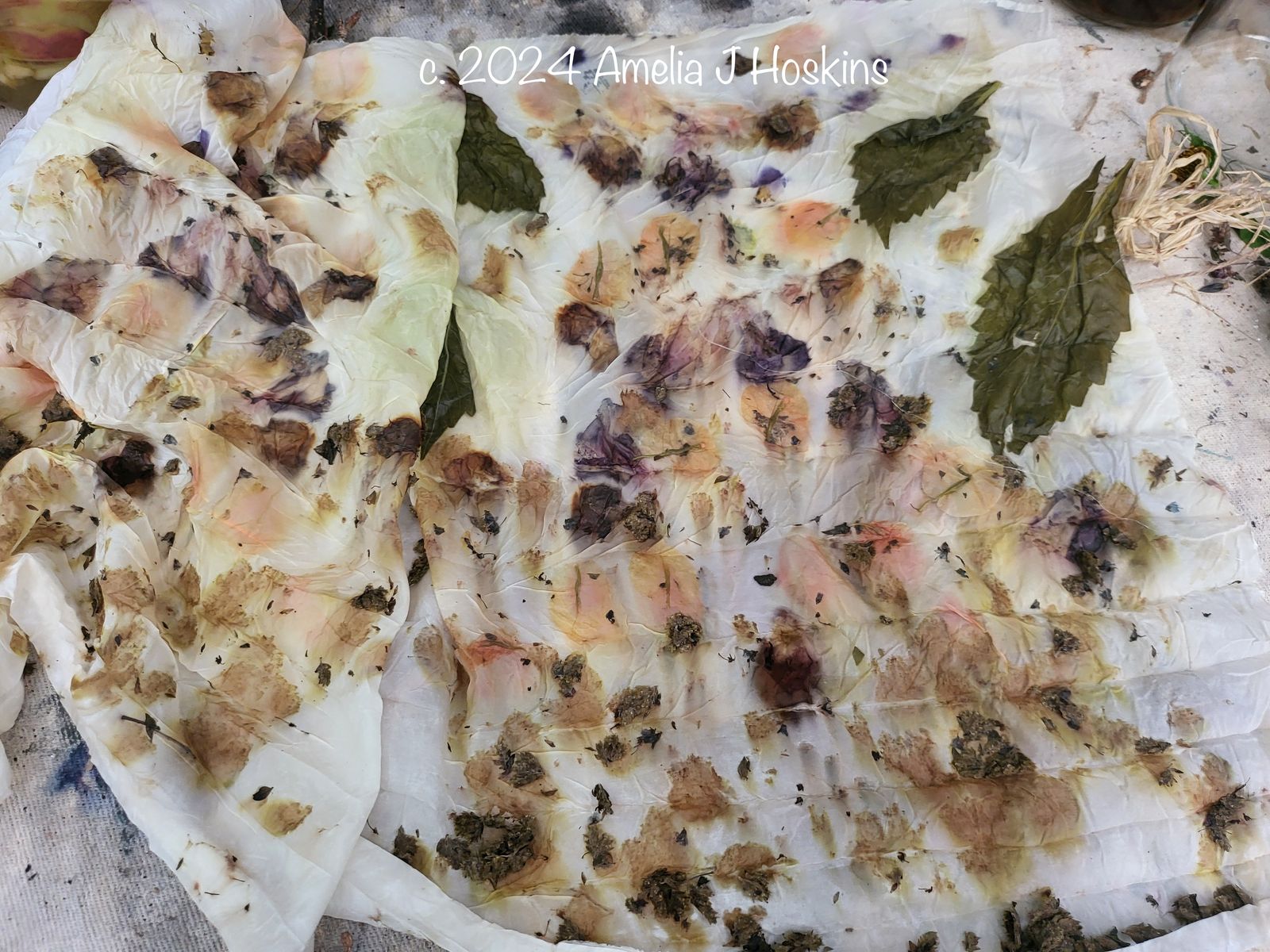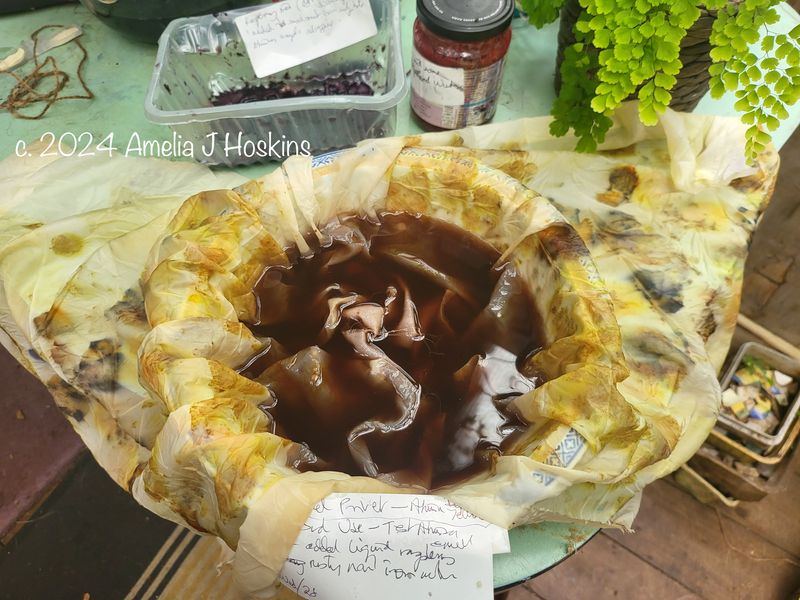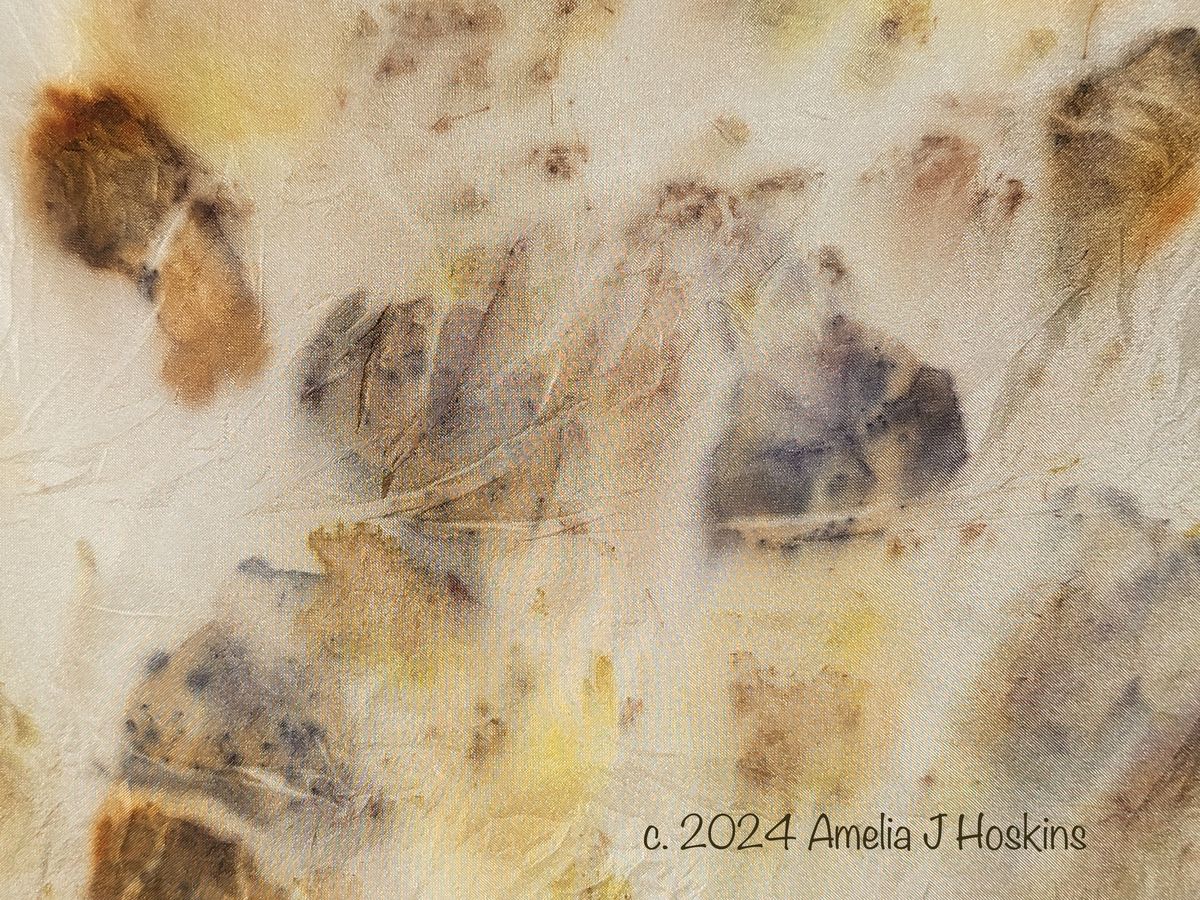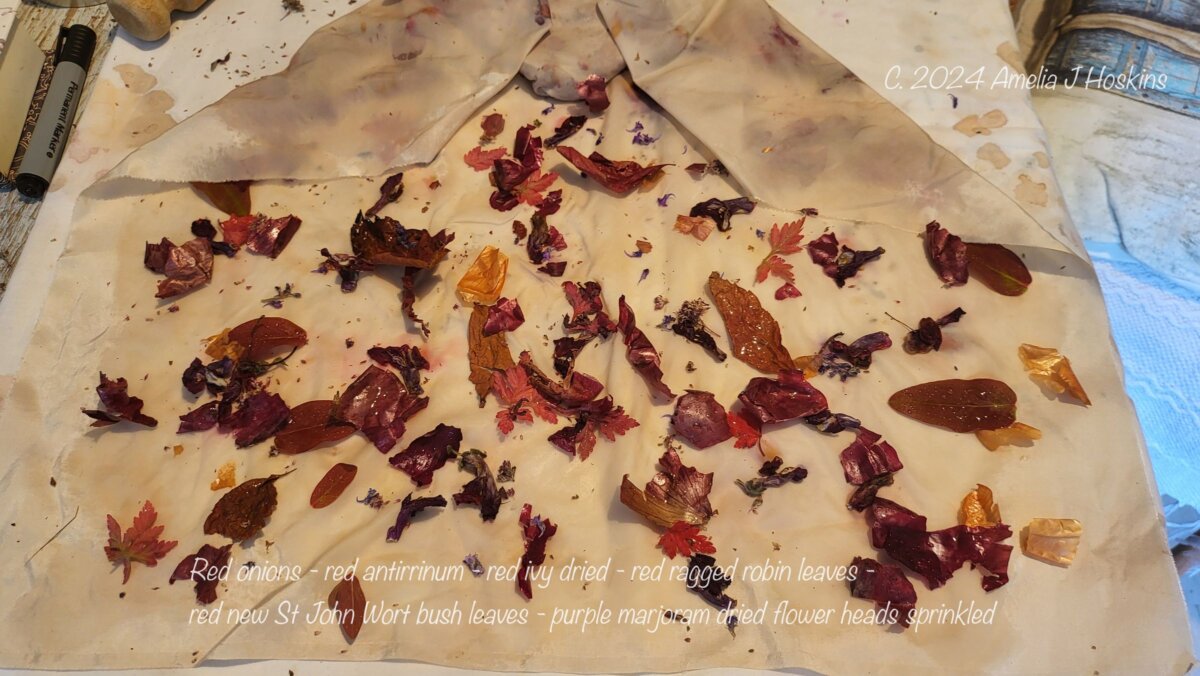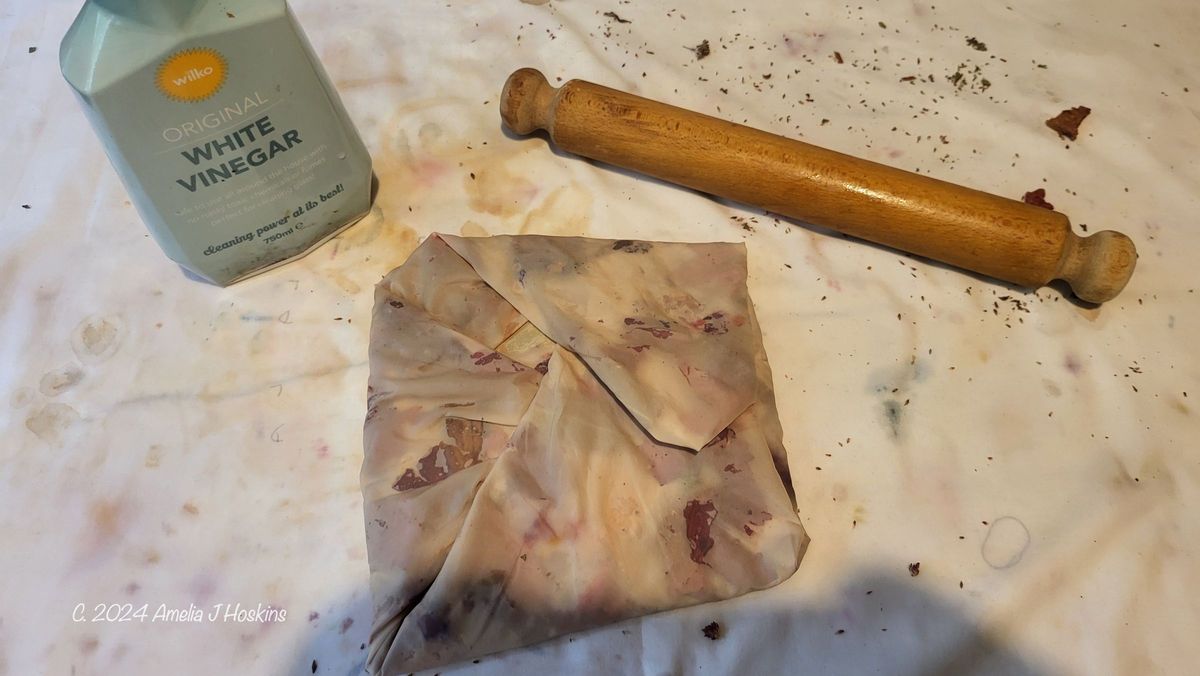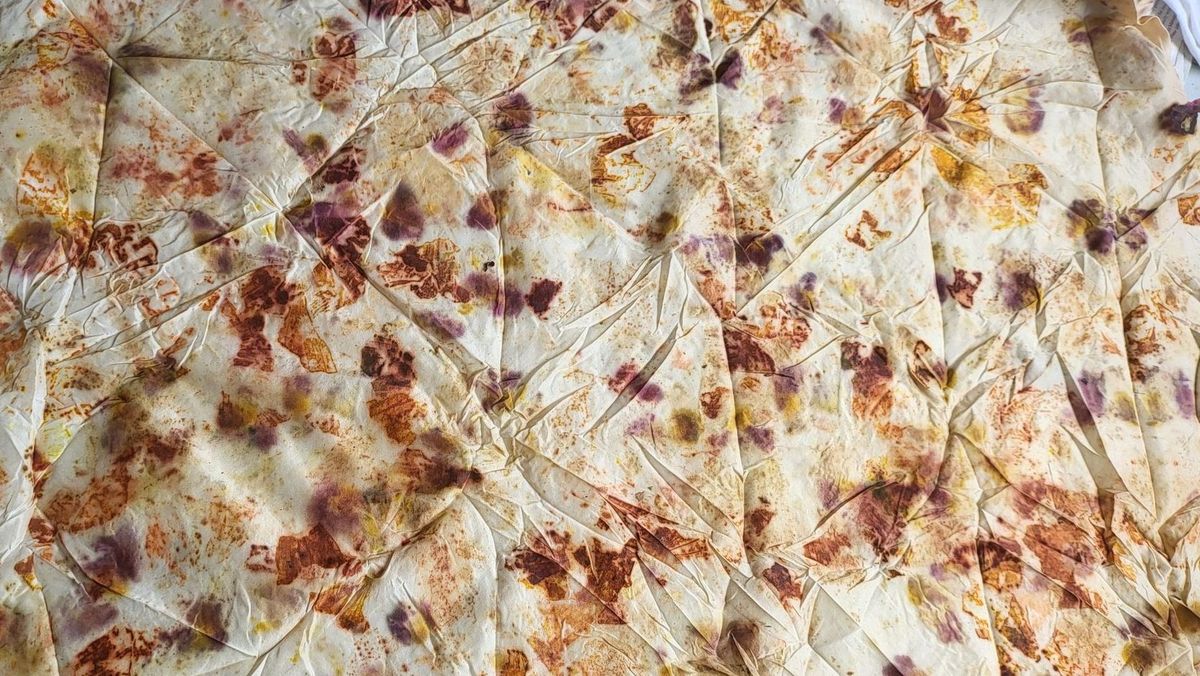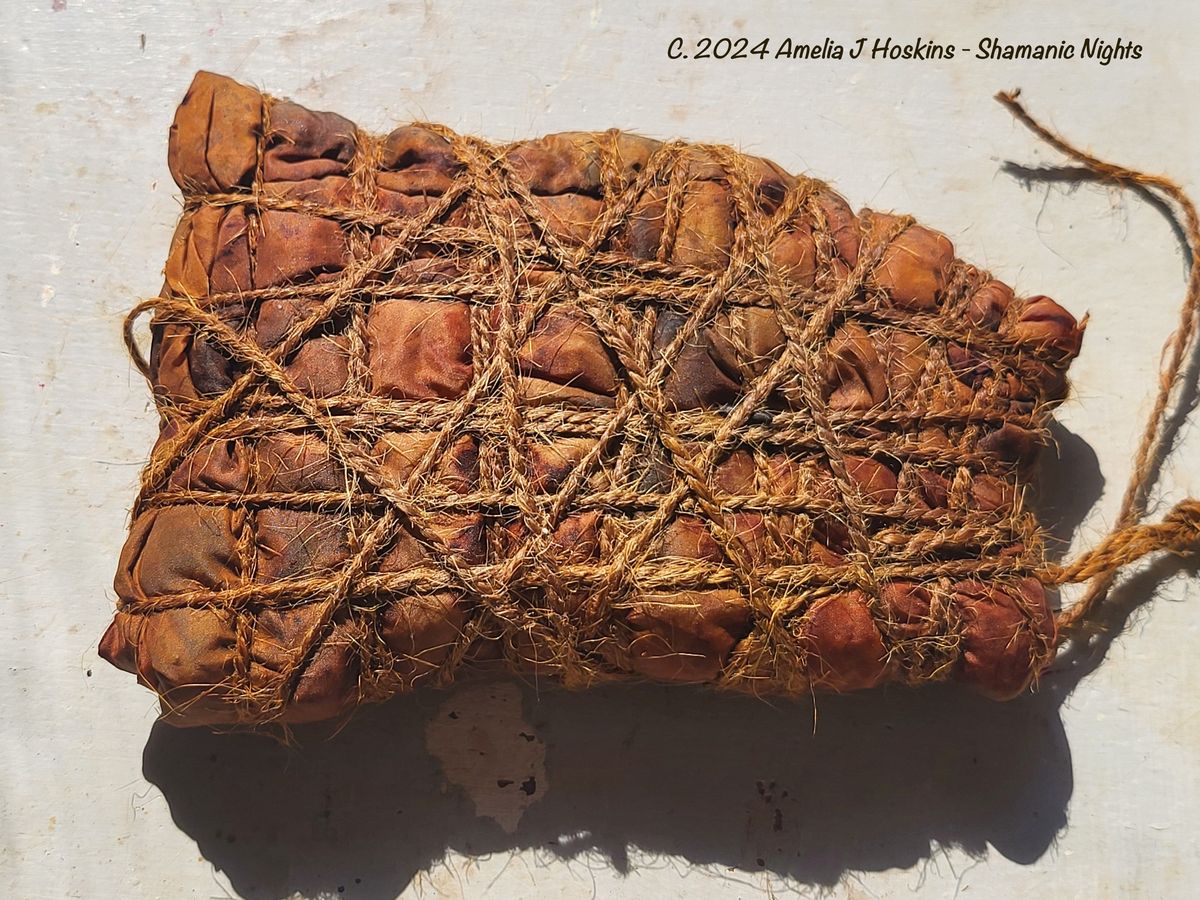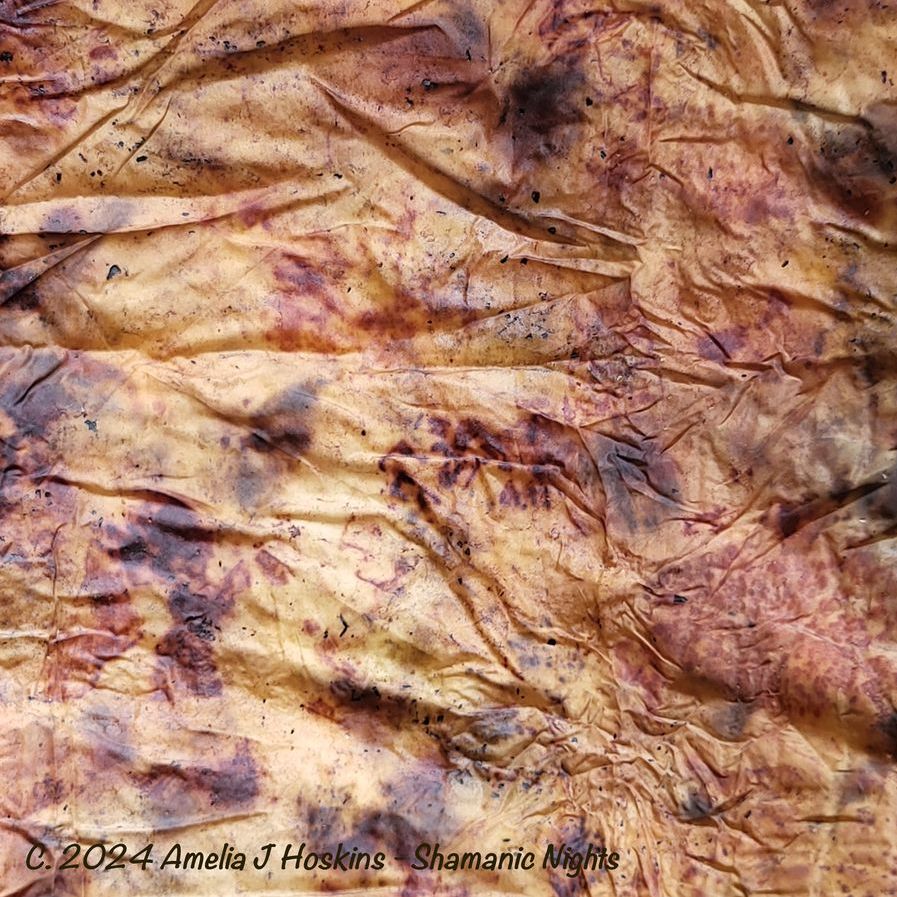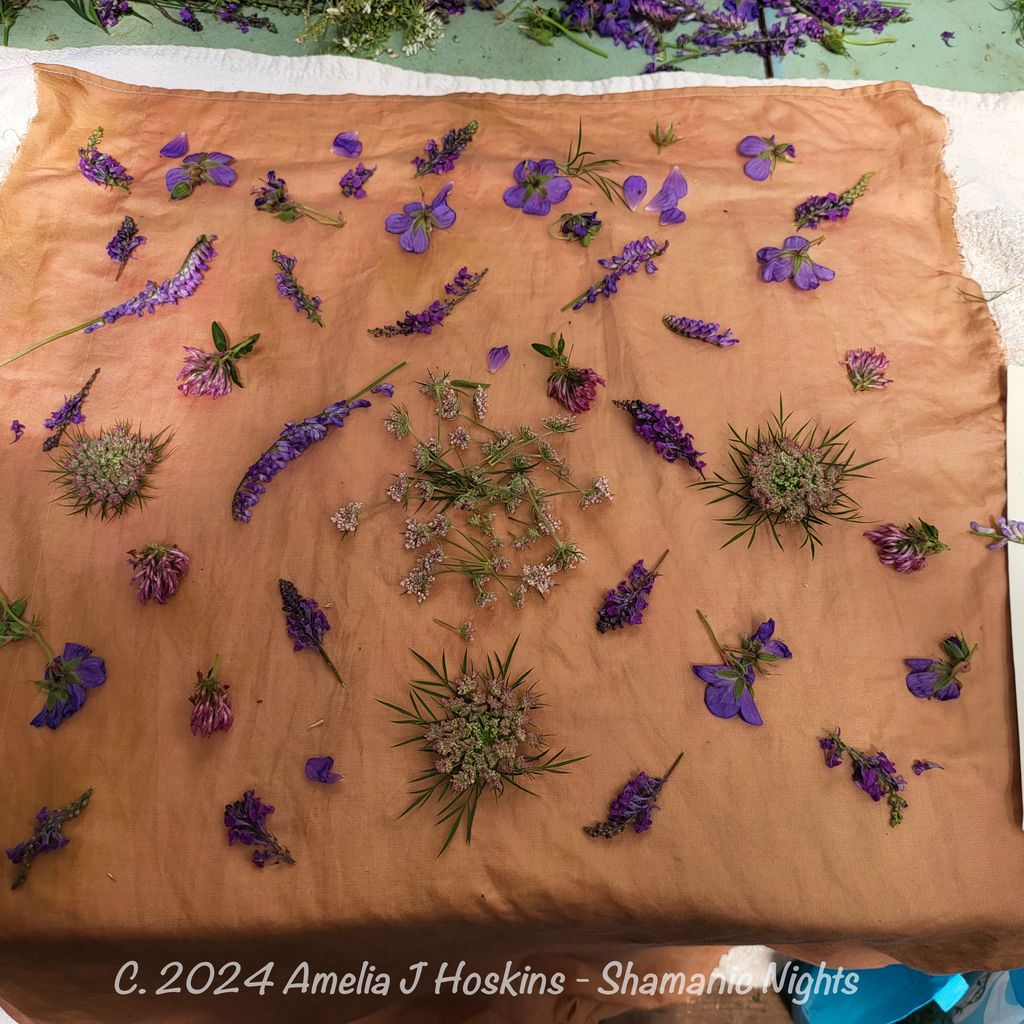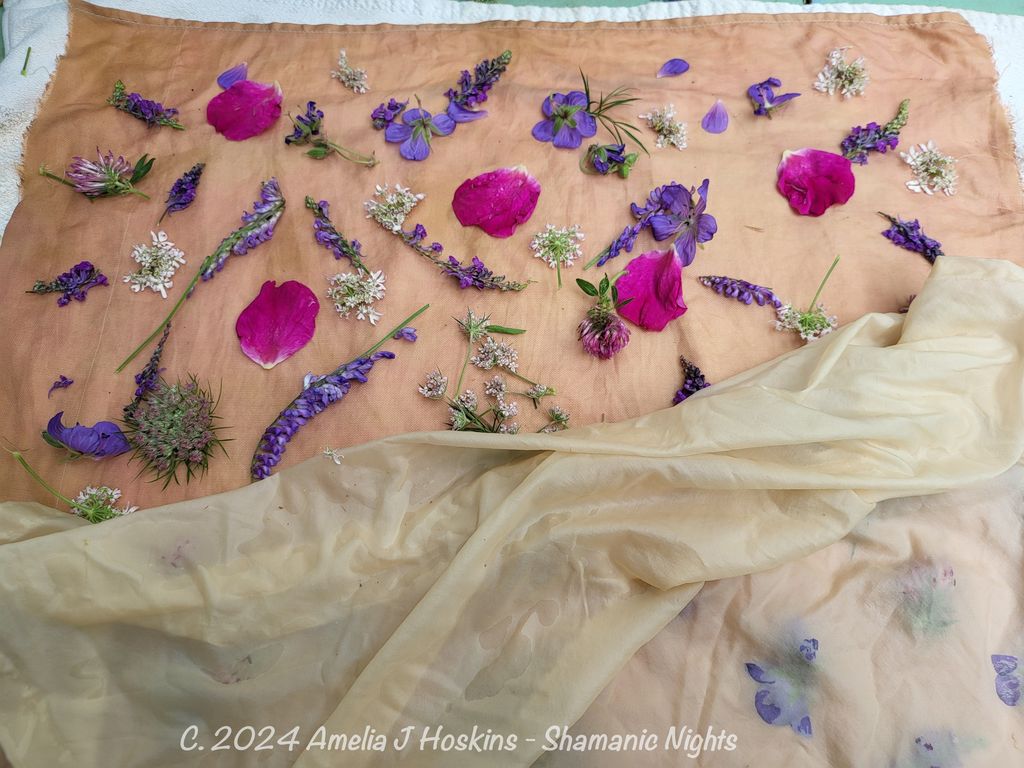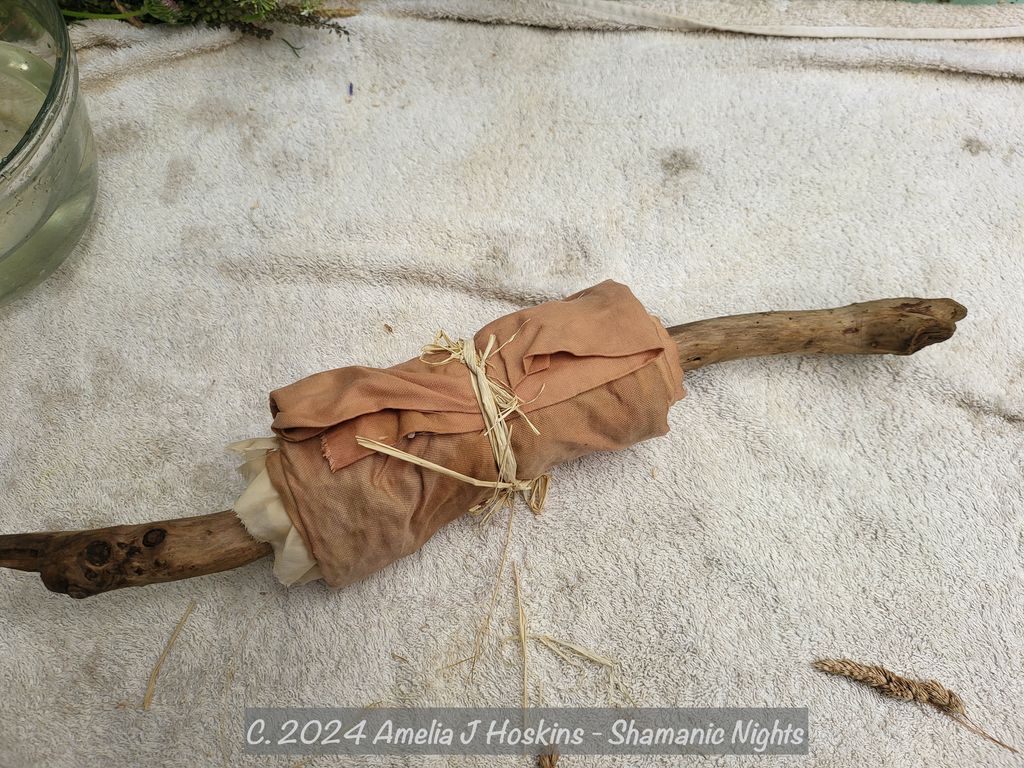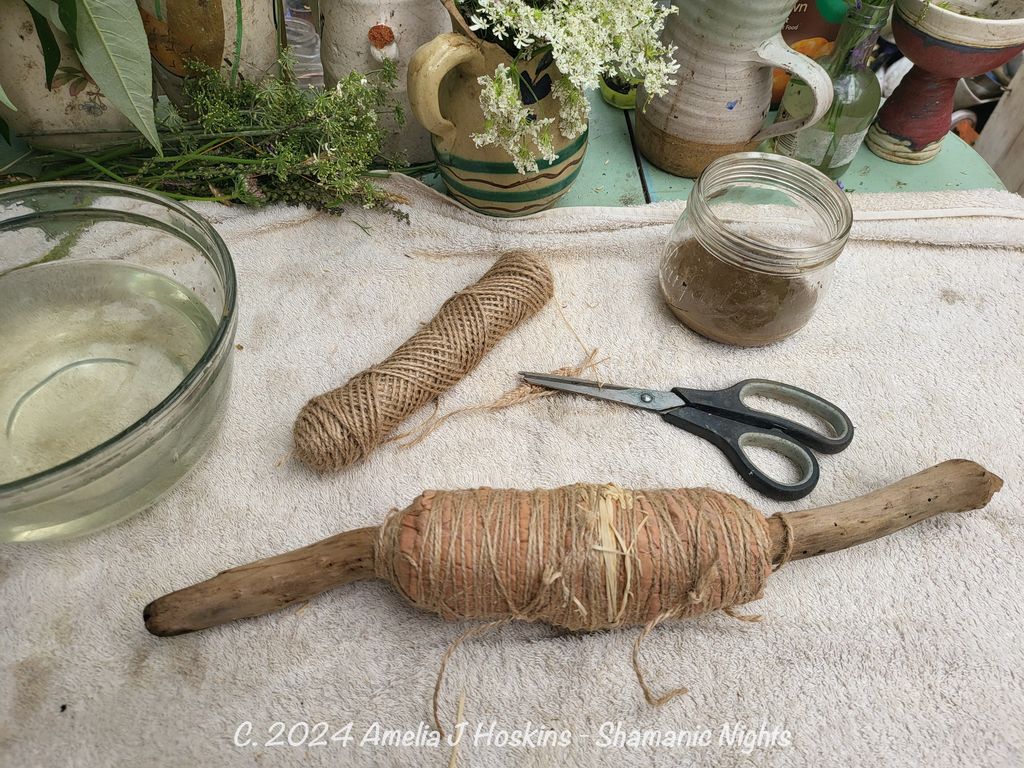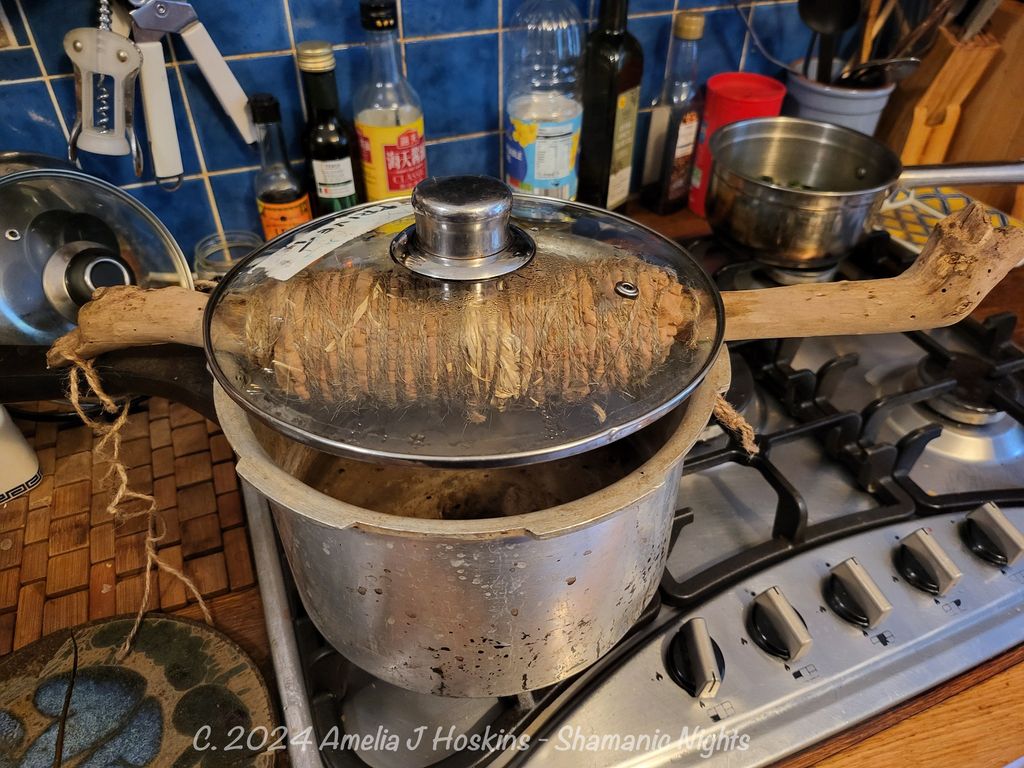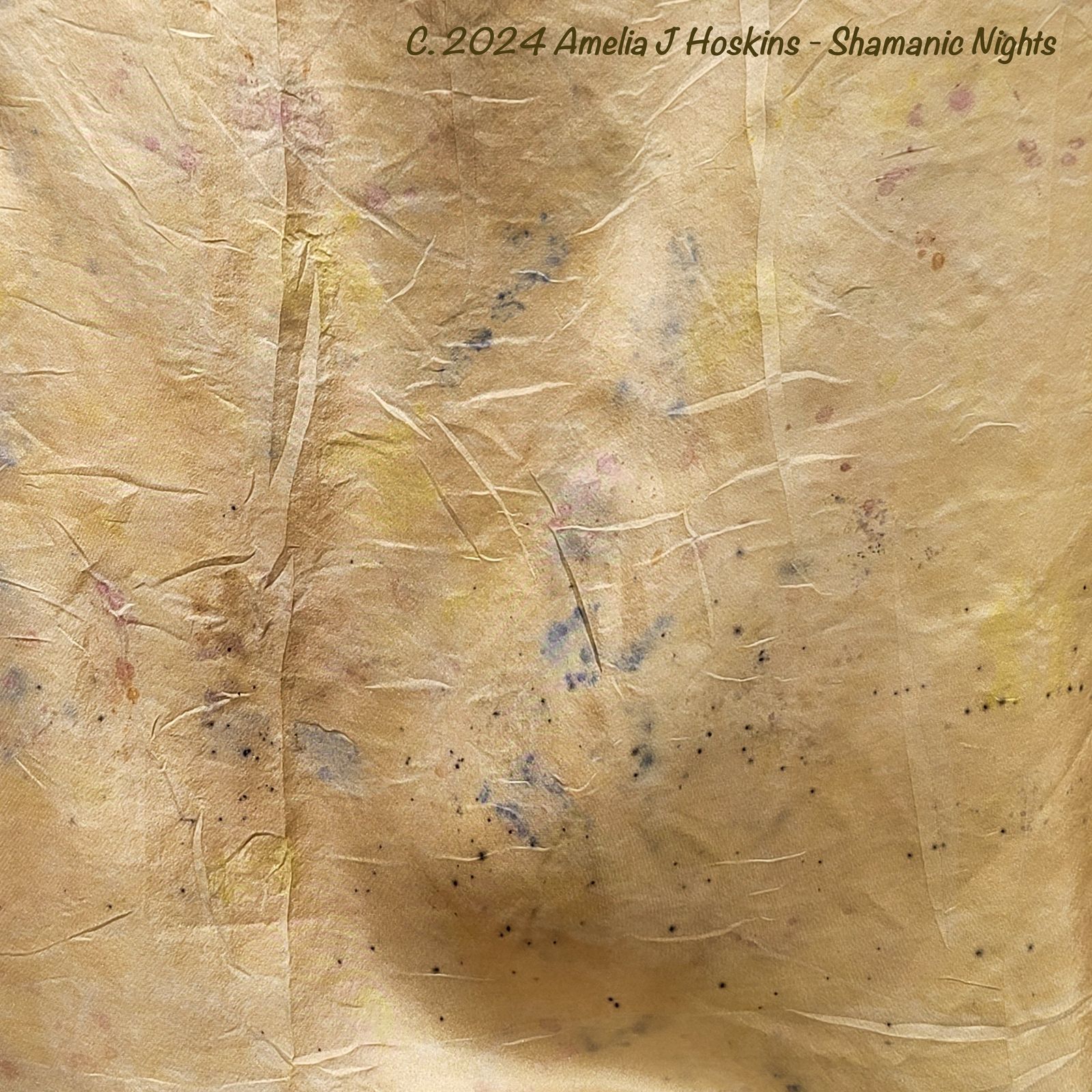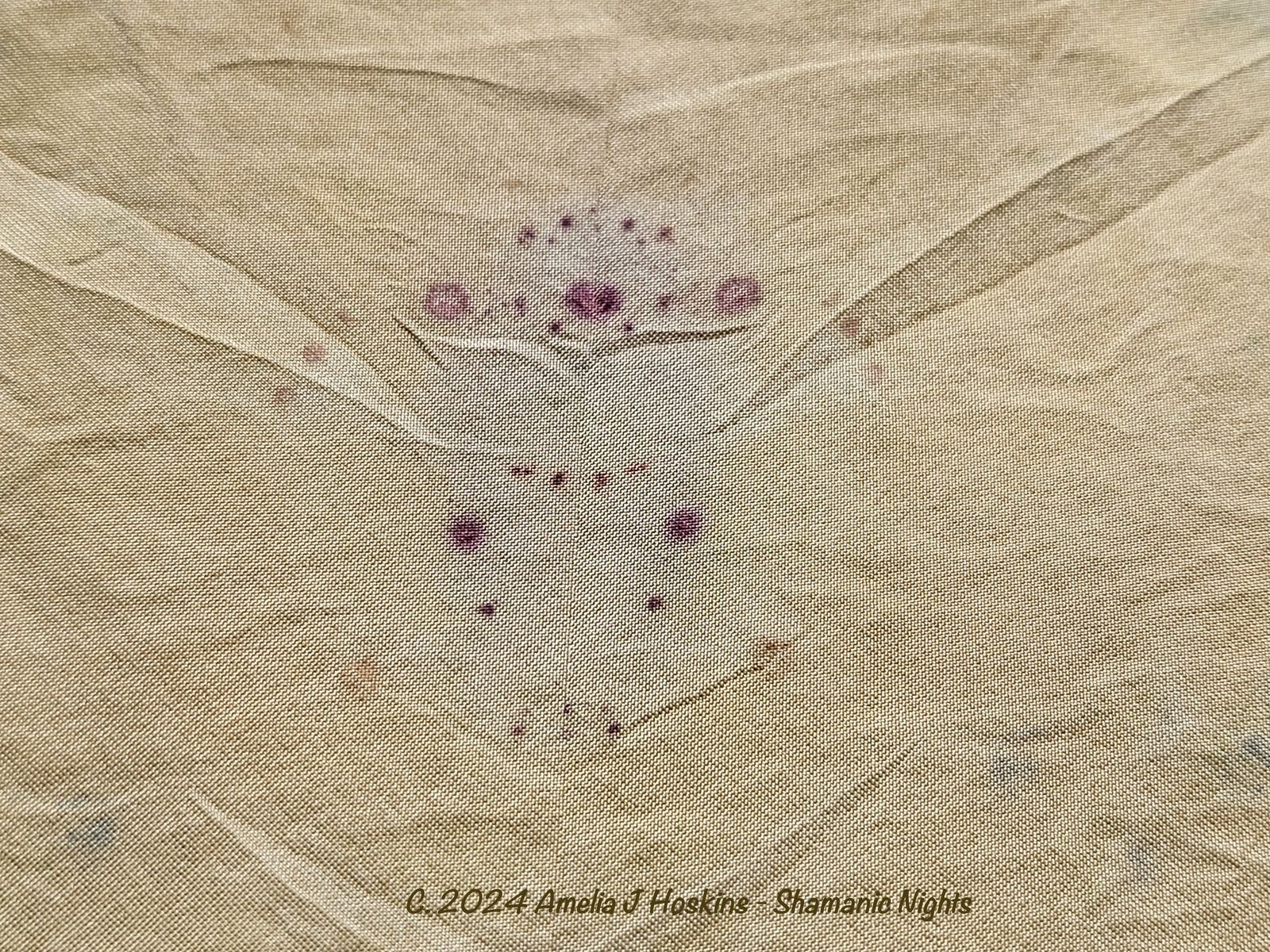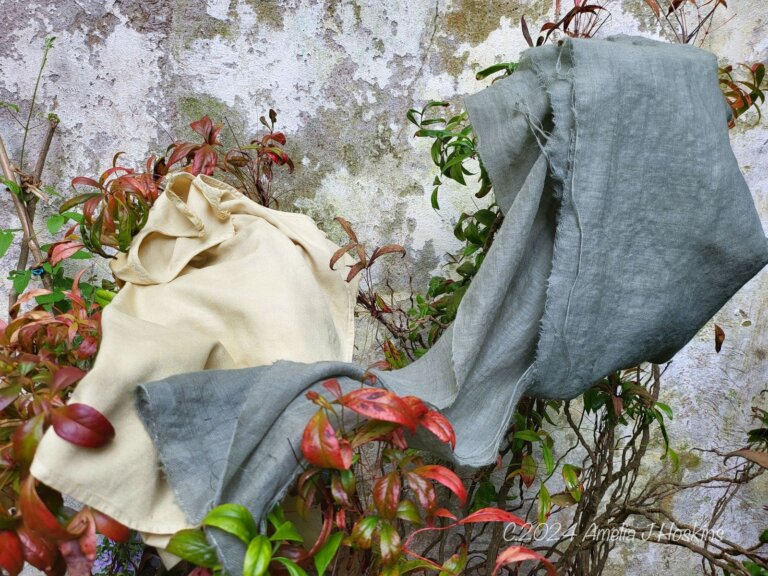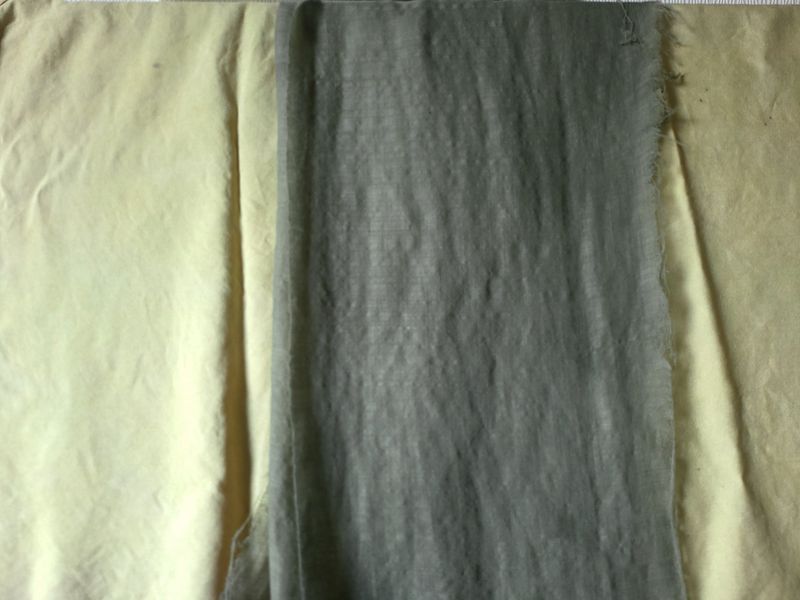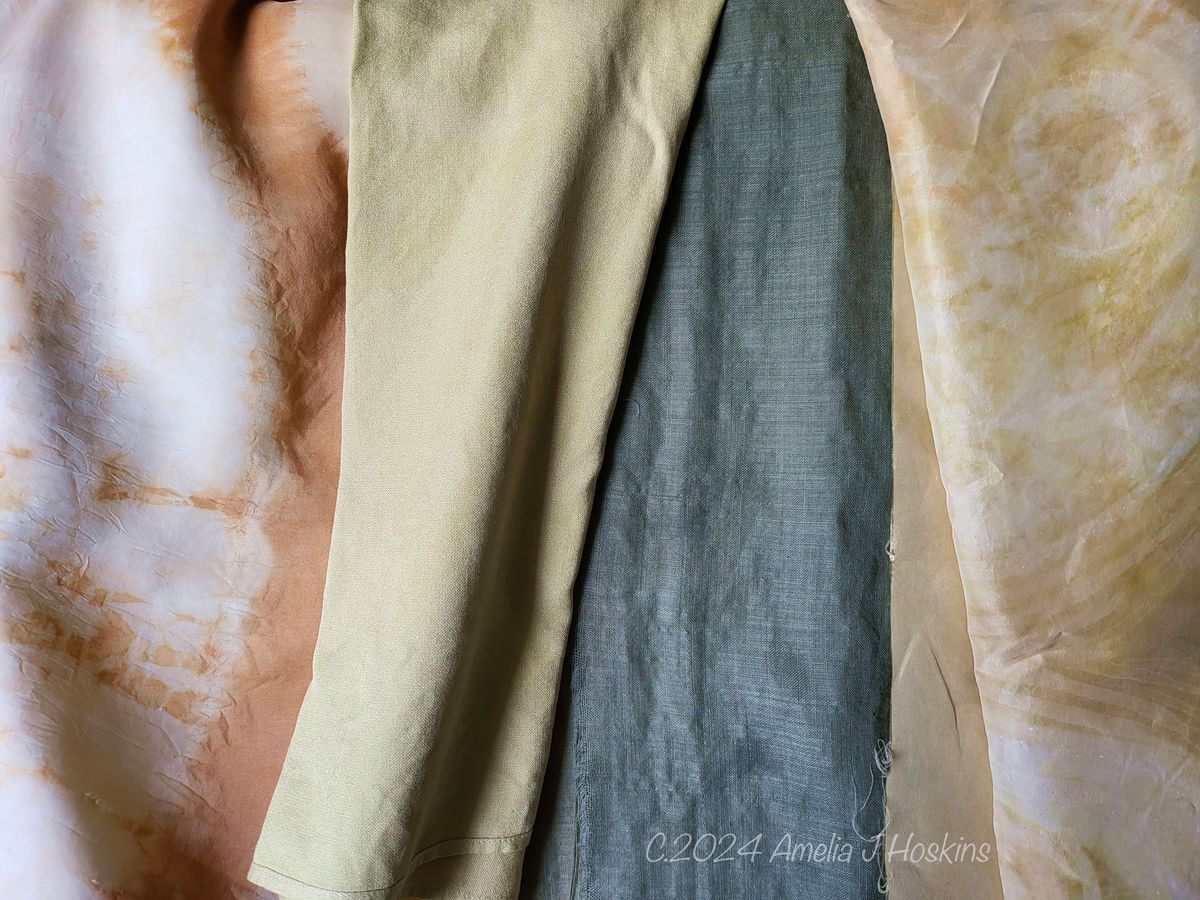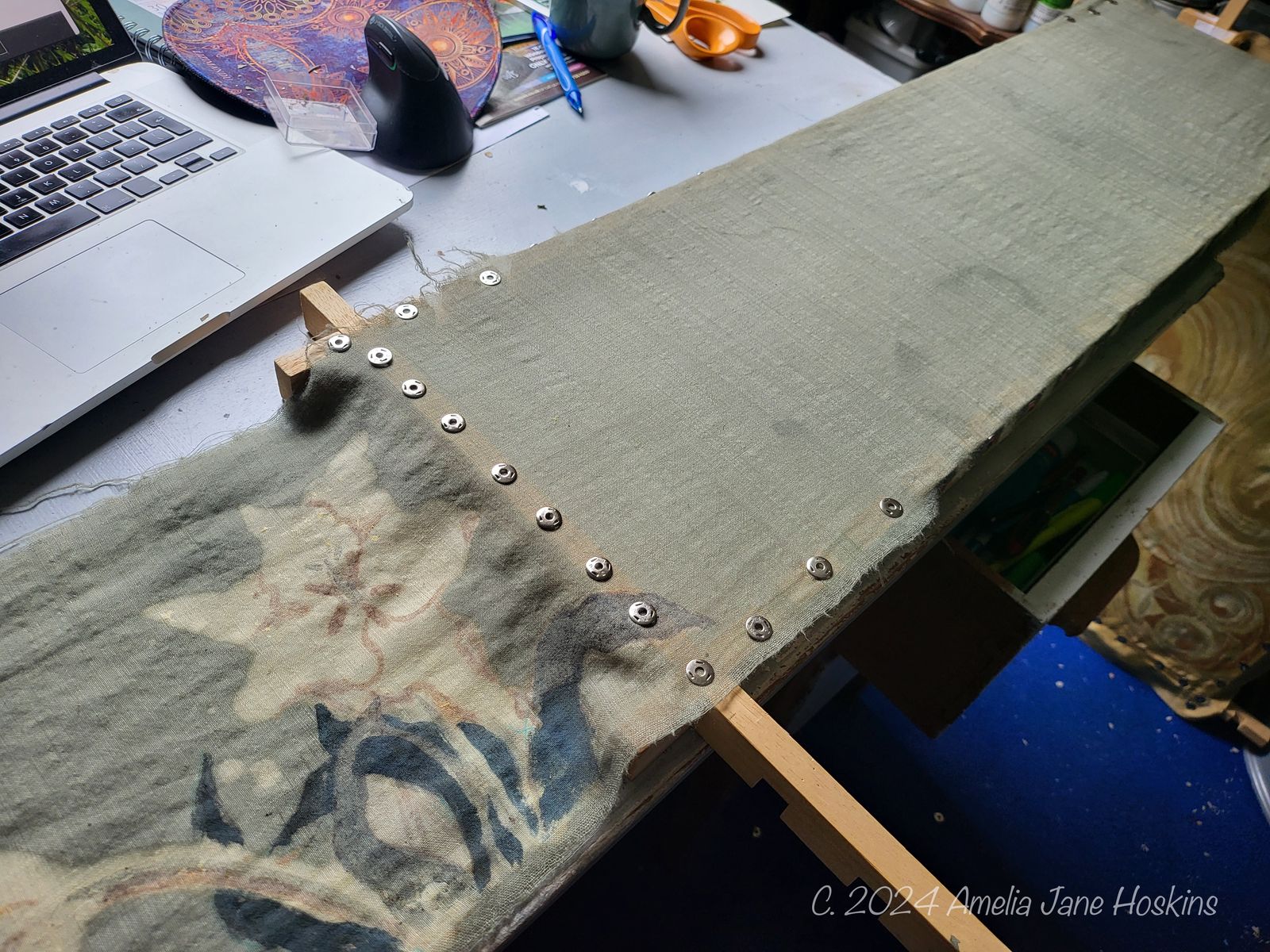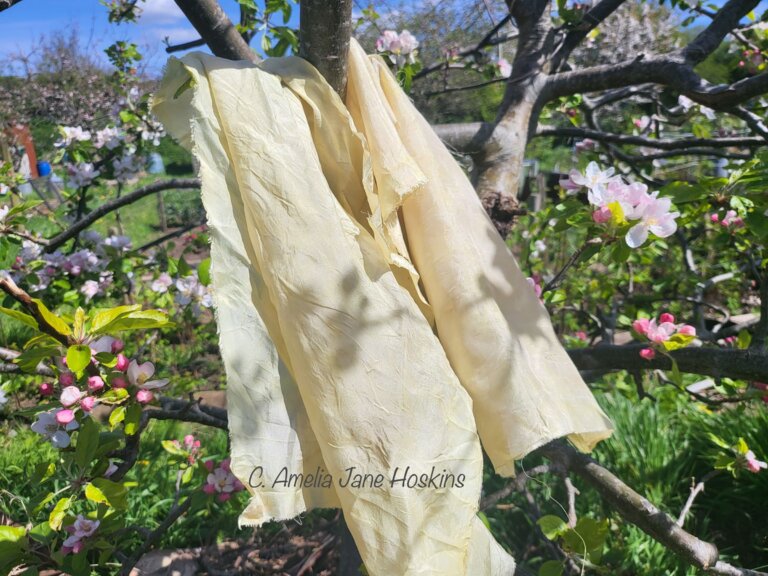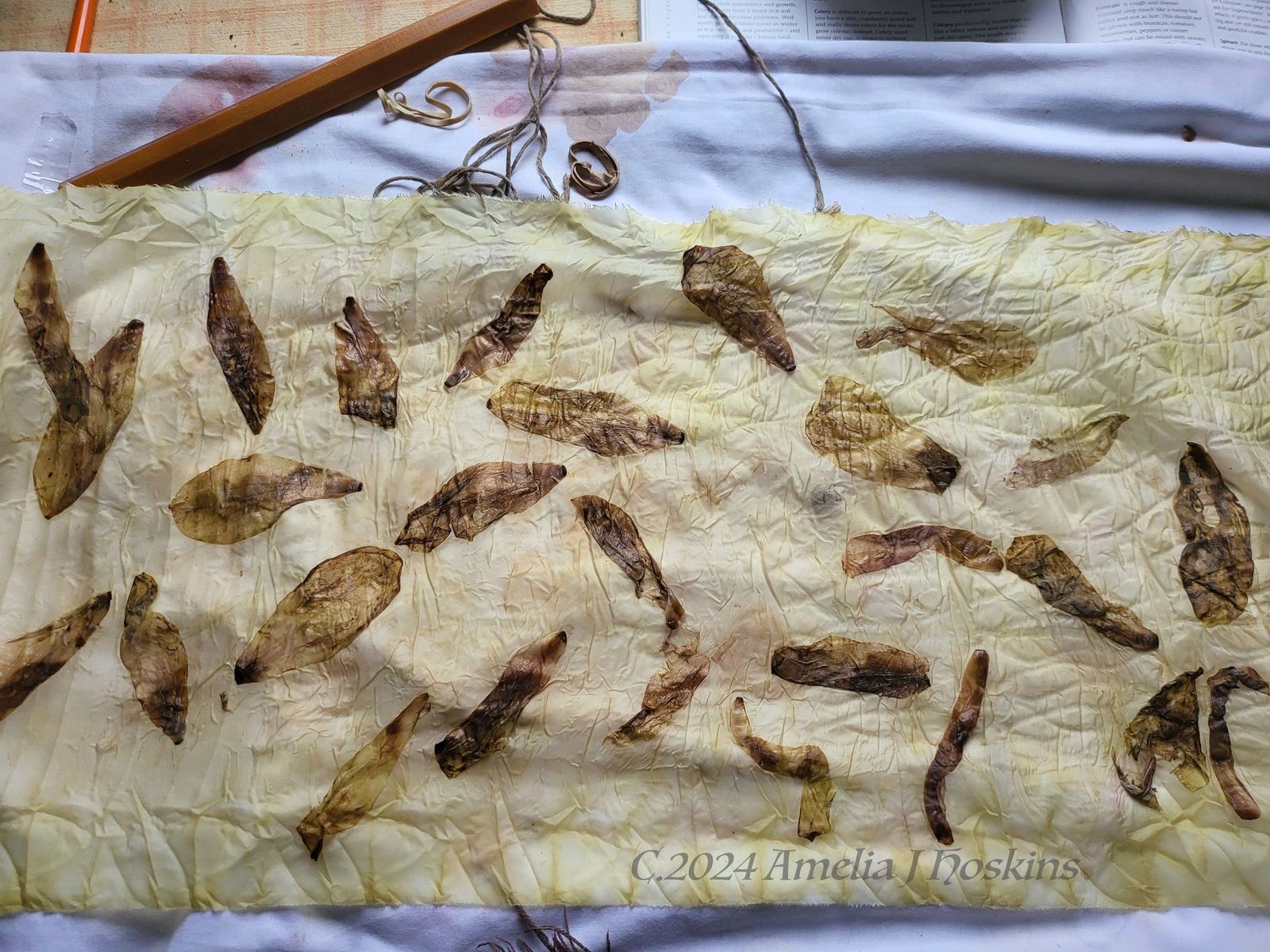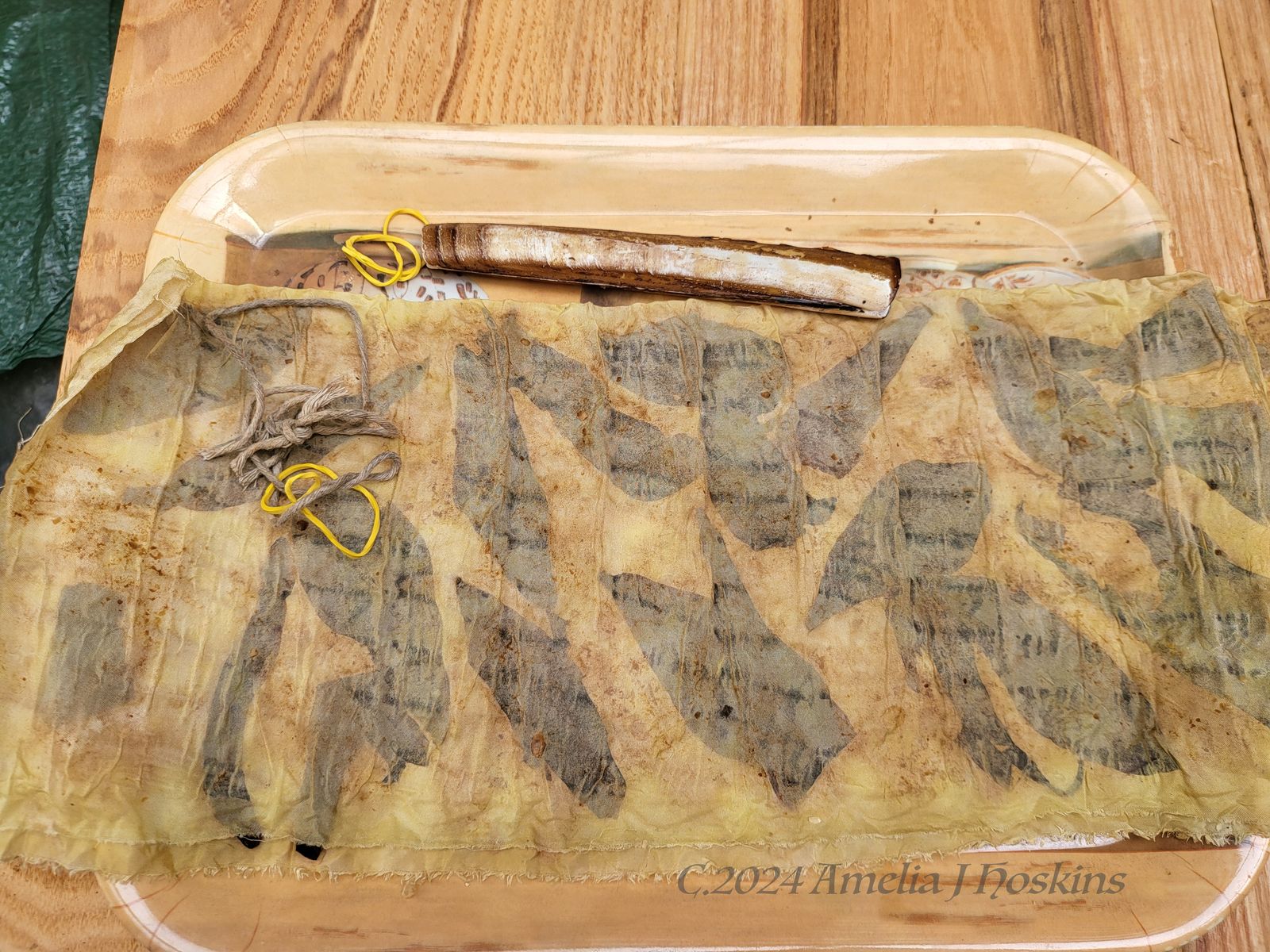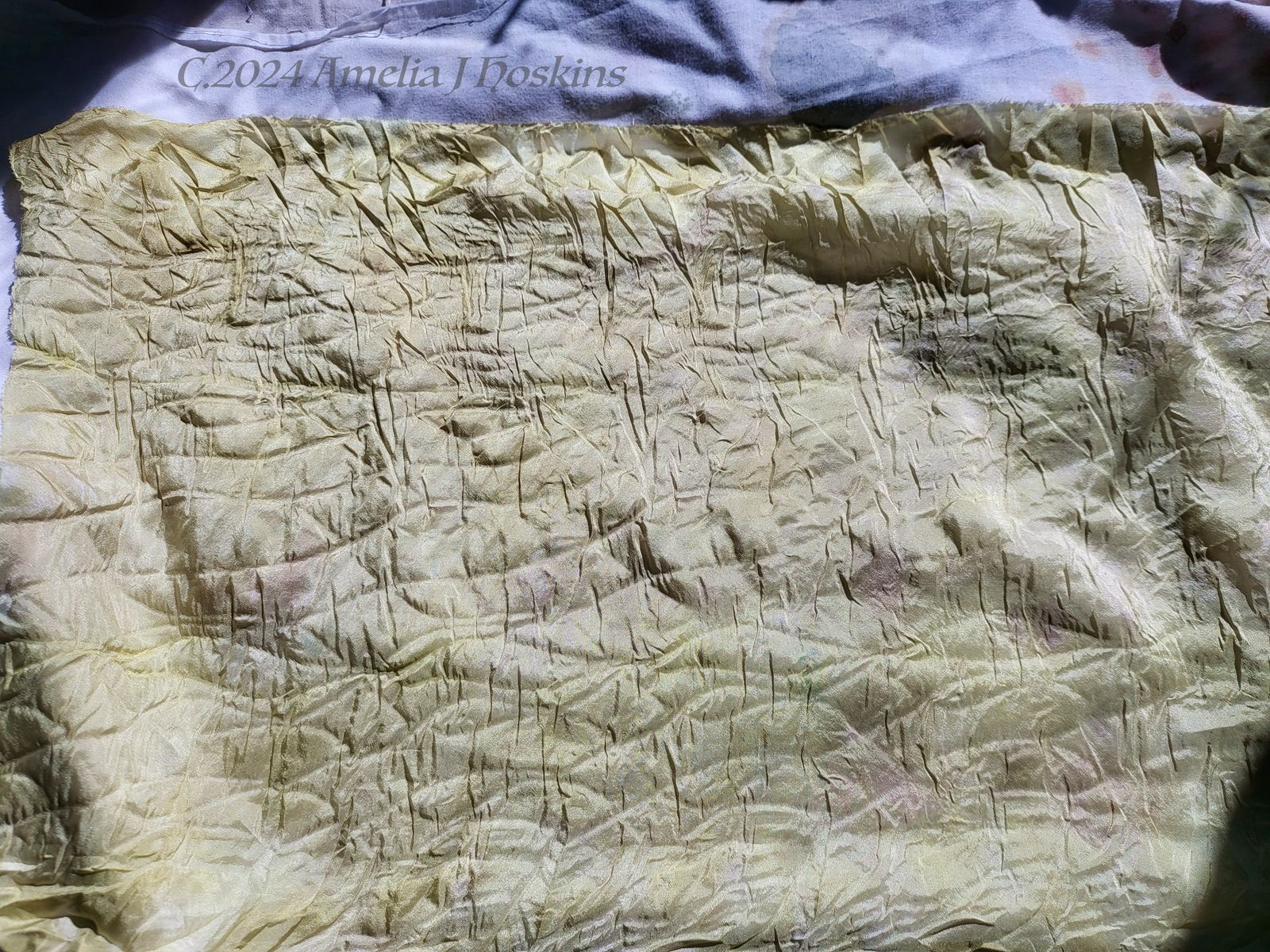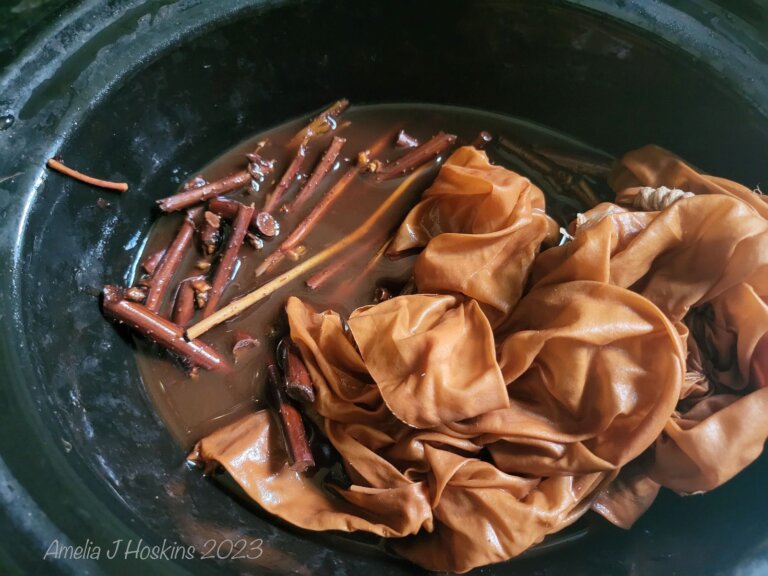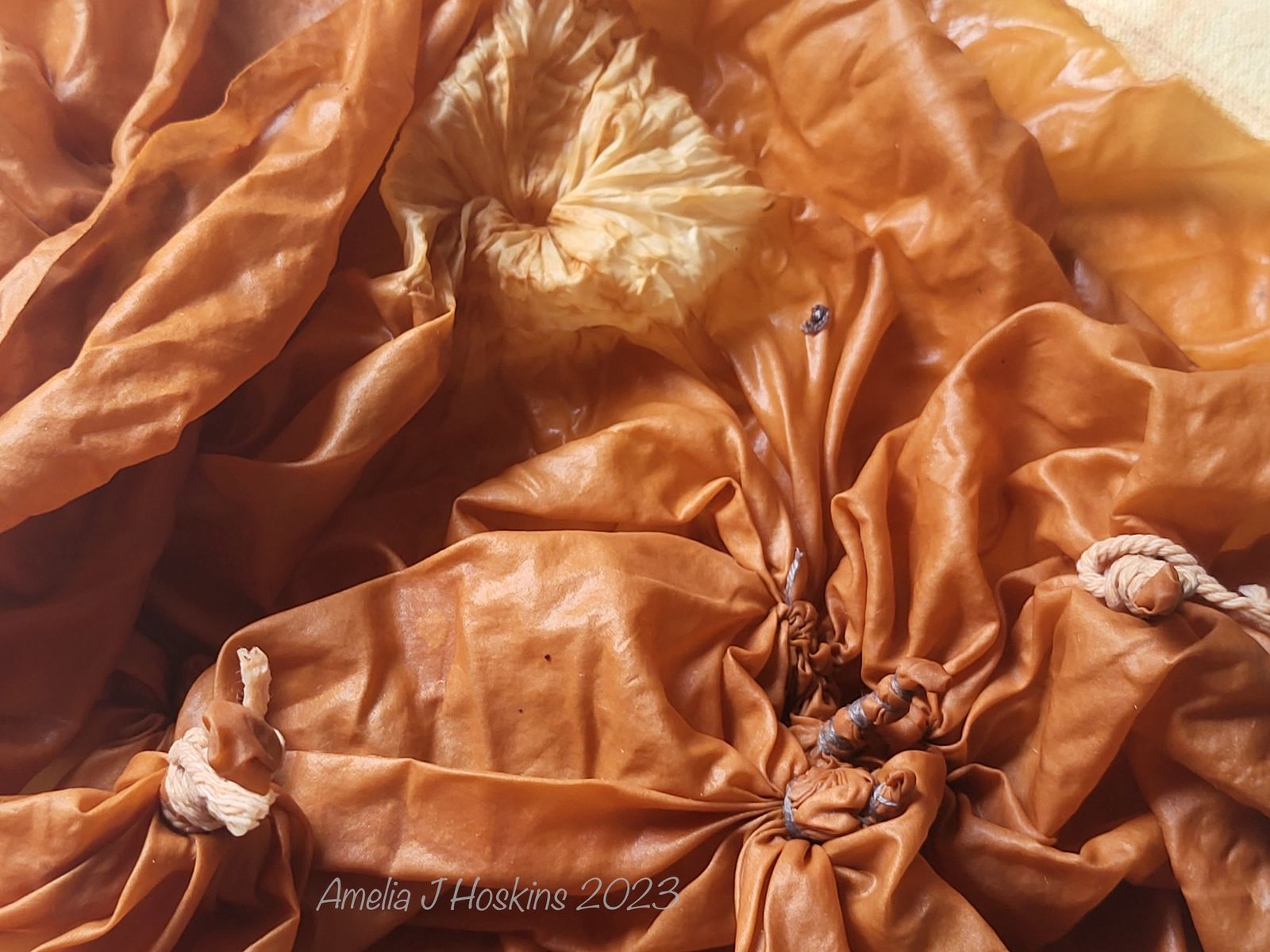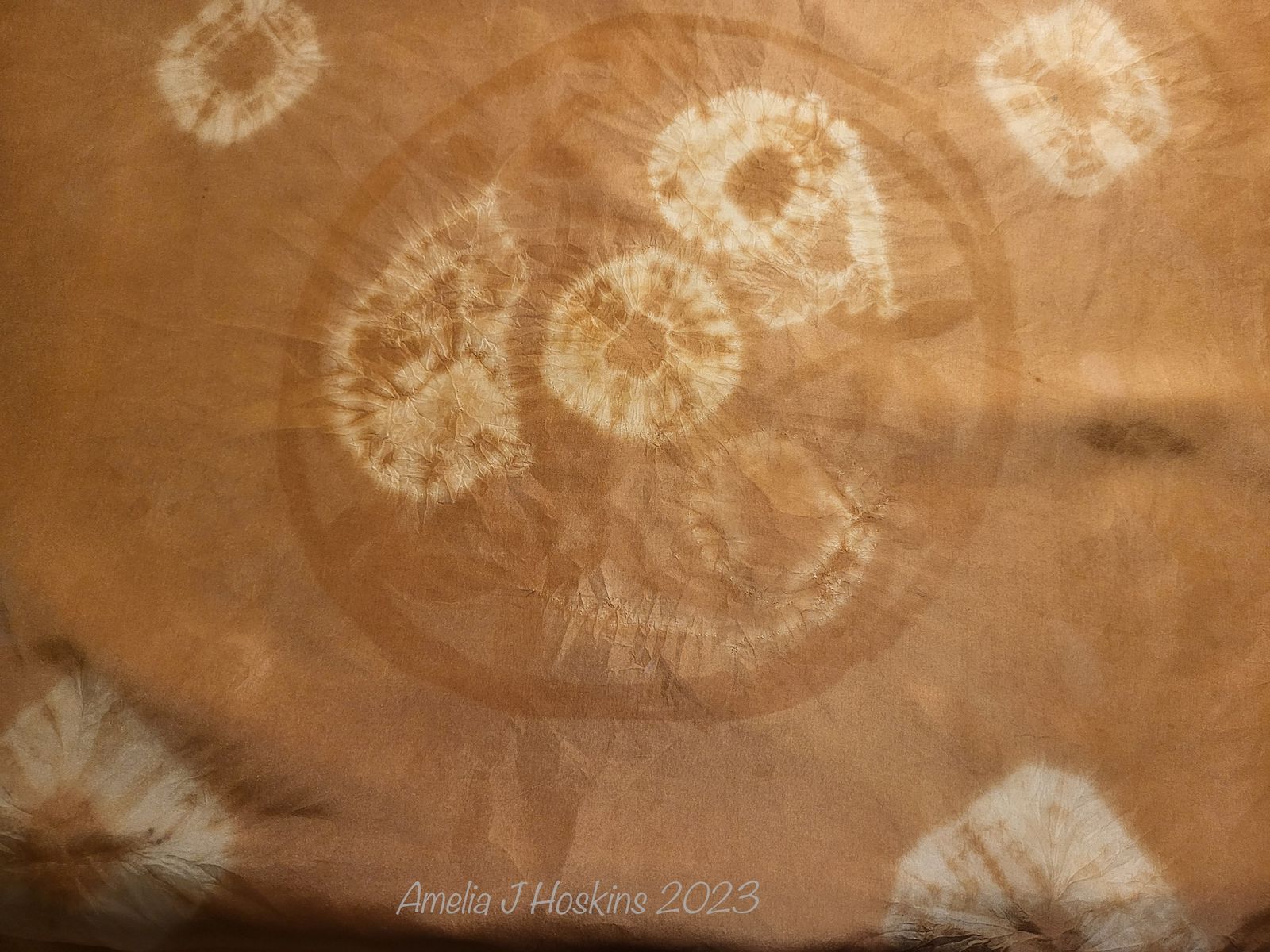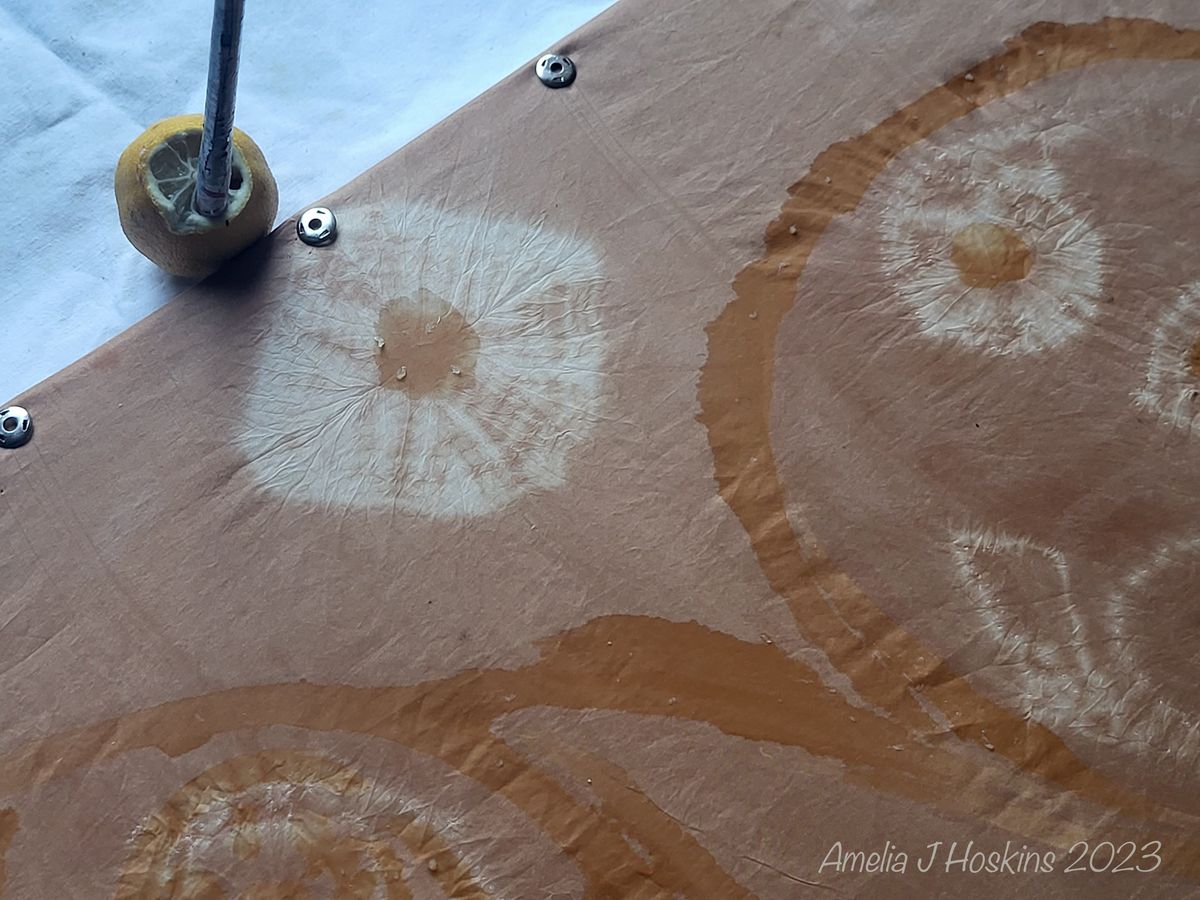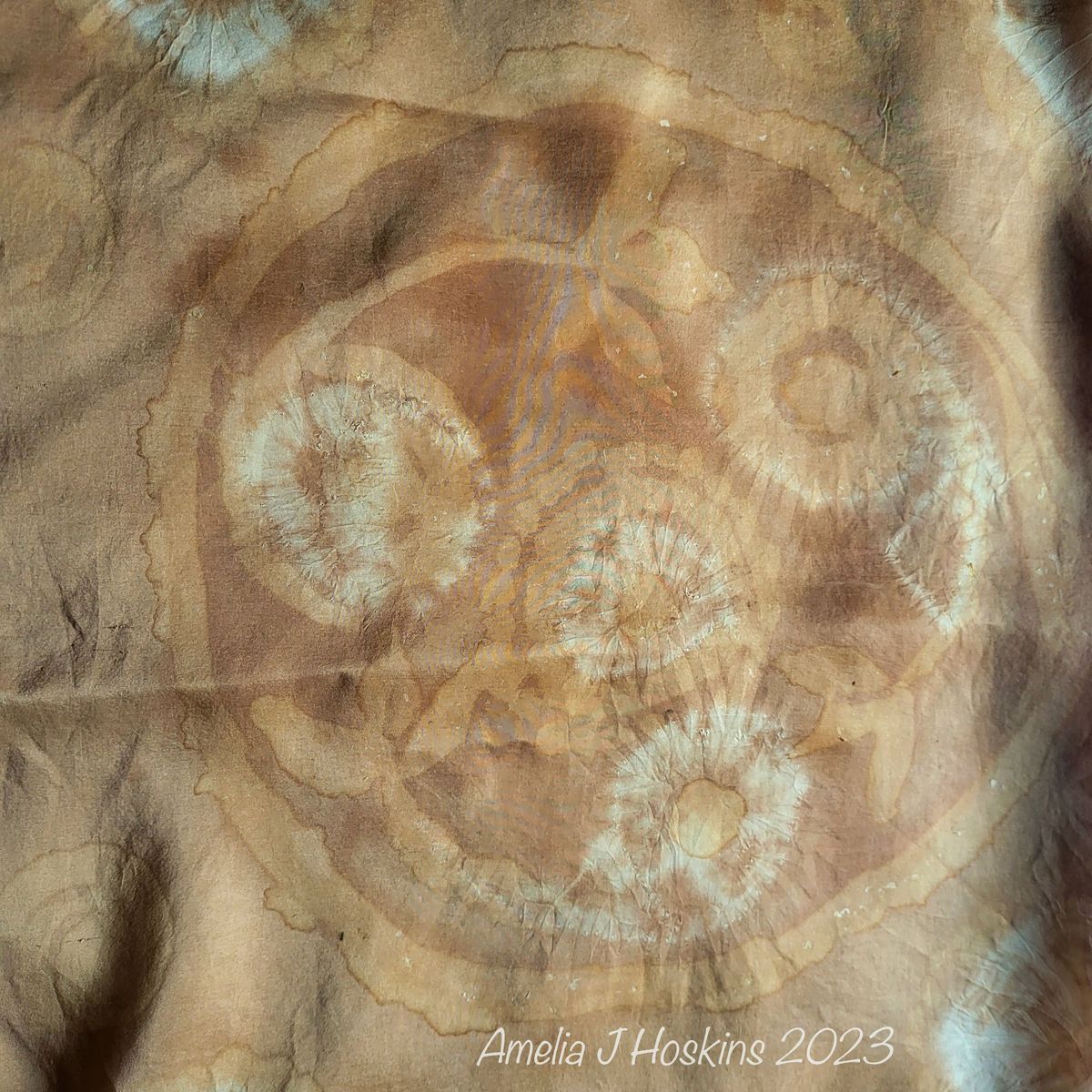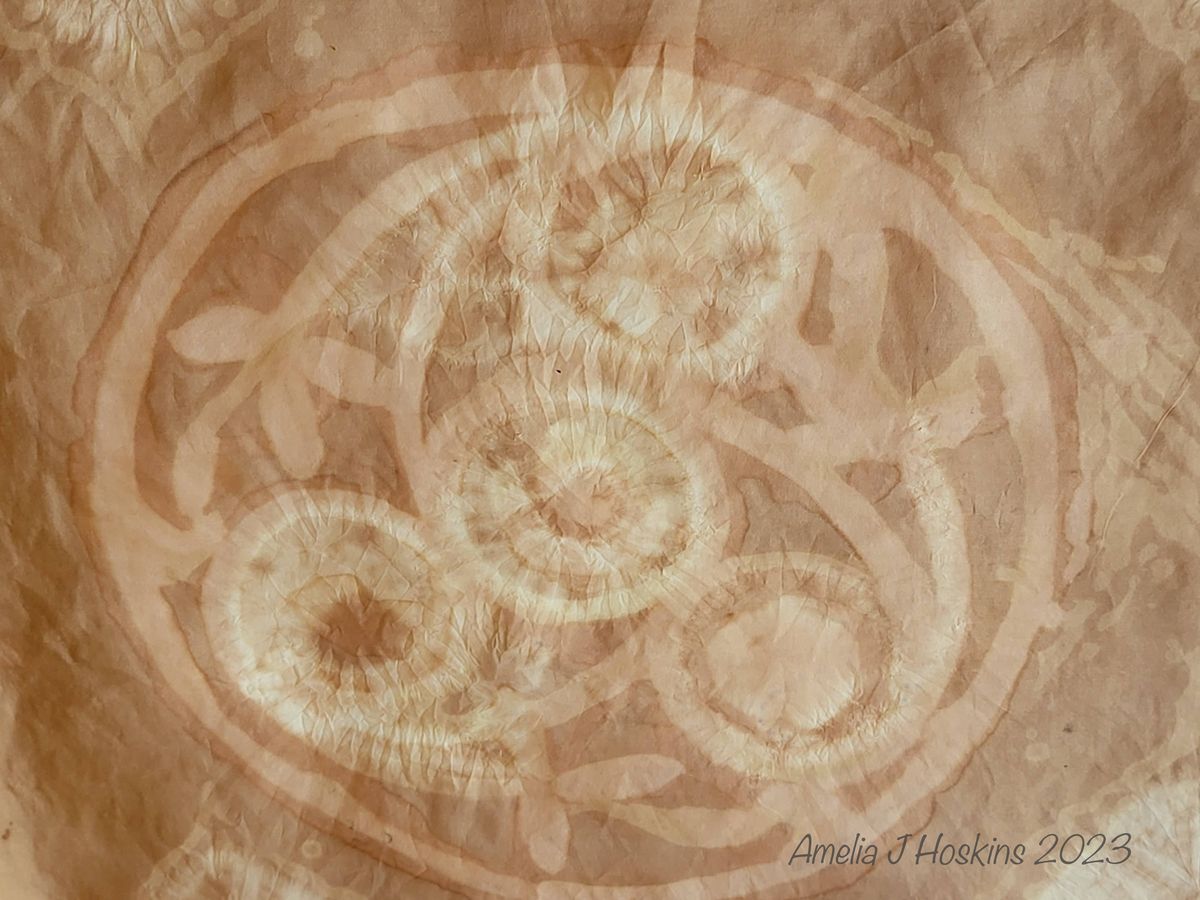Raspberry Rose Celtic Kimono Dress
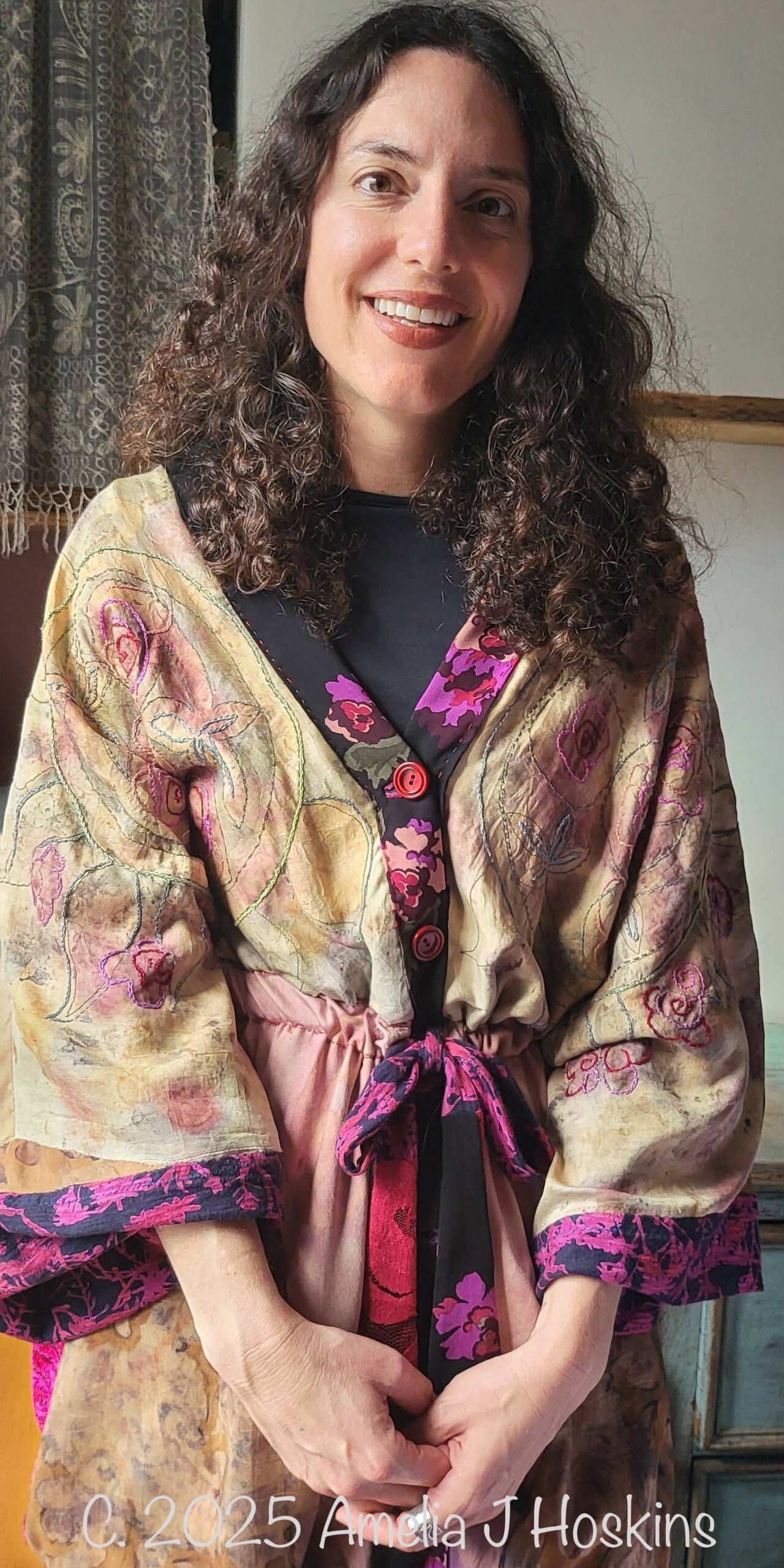
Sumptuous and totally unique kimono dress. Mixed fabrics: including magenta pink-red velvet devore at back and a variety of silk dyed pieces at front. Experiments with eco dyeing using plants to dye Ahimsa and Habotai silks.
LEFT SIDE SILK LOWER
Lower dress side: Habotai silk dyed in golds and purples; created by bundle dyeing [link] - Many layers of over dyeing. Definition added with logwood, lemon juice and woad. With bundle dyed silks, after steaming, outlines can be added to create 'design' shapes, like flowers. Useful when the dyed effects merge together with no design definition.
This has come out quite well; using just one piece, cut diagonally to add to each side of garment.
Additional blackberry dyed Ahimsa silk is used bottom front next to it.
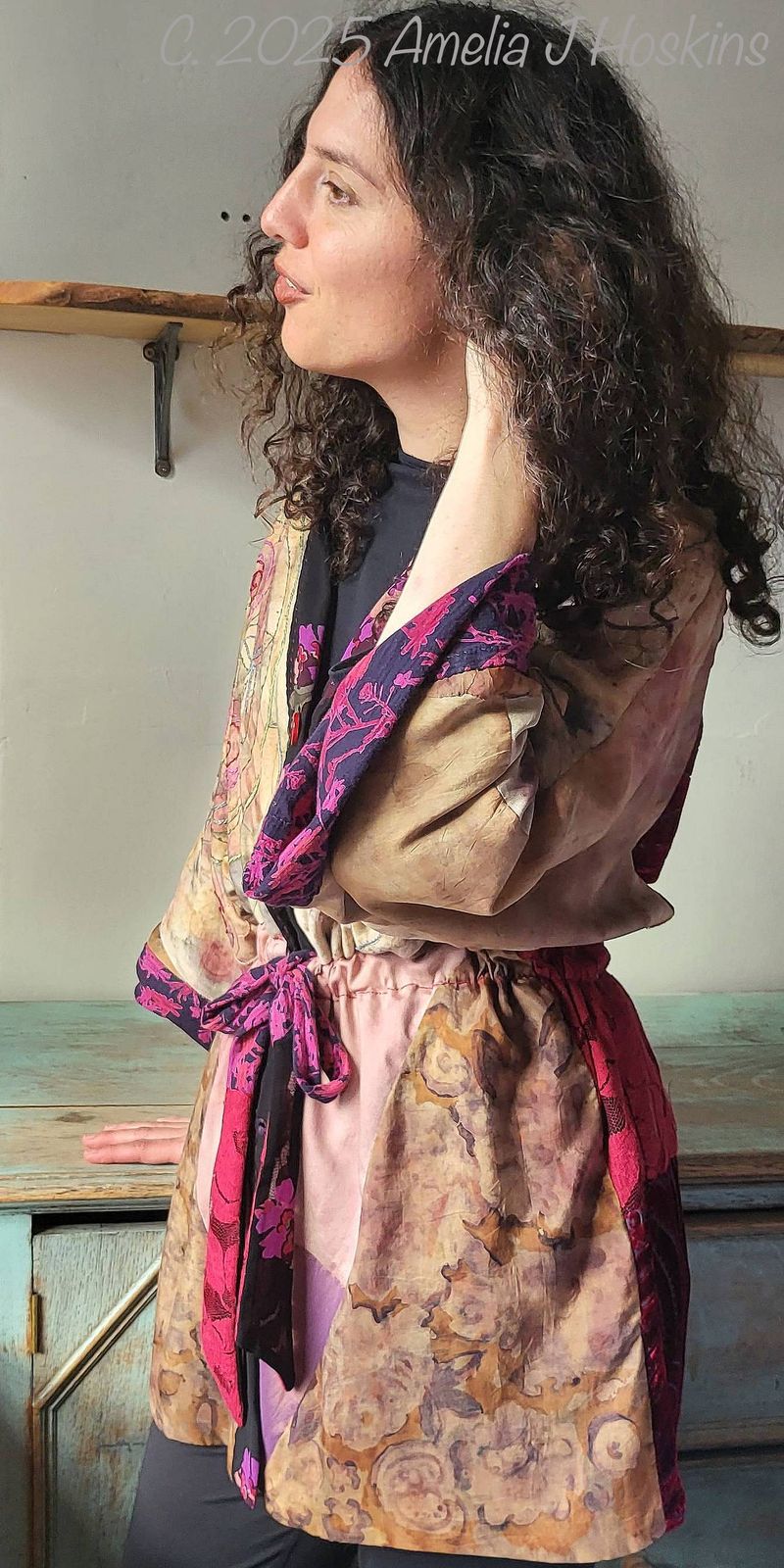
LEFT SIDE SILK UPPER
Sleeve section in Ahimsa silk, bundle dyed with various flowers and leaves, and blackberries [background eco print session see Session 4 'To get some colour'. A blotchy result led to being over-embroidered.
Embroidered Celtic Triskele design of 'rounds' added to silk with overplay of abstracted chain stitch embroidered 'roses'. Added embroidered 'leaves' extend from circles down sleeve.
Black/pink cotton jersey is seen as 'cuff' below sleeve and is partial lining inside sleeves. Together with the jersey and the Ahimsa silk, the main 'body' is very warm.
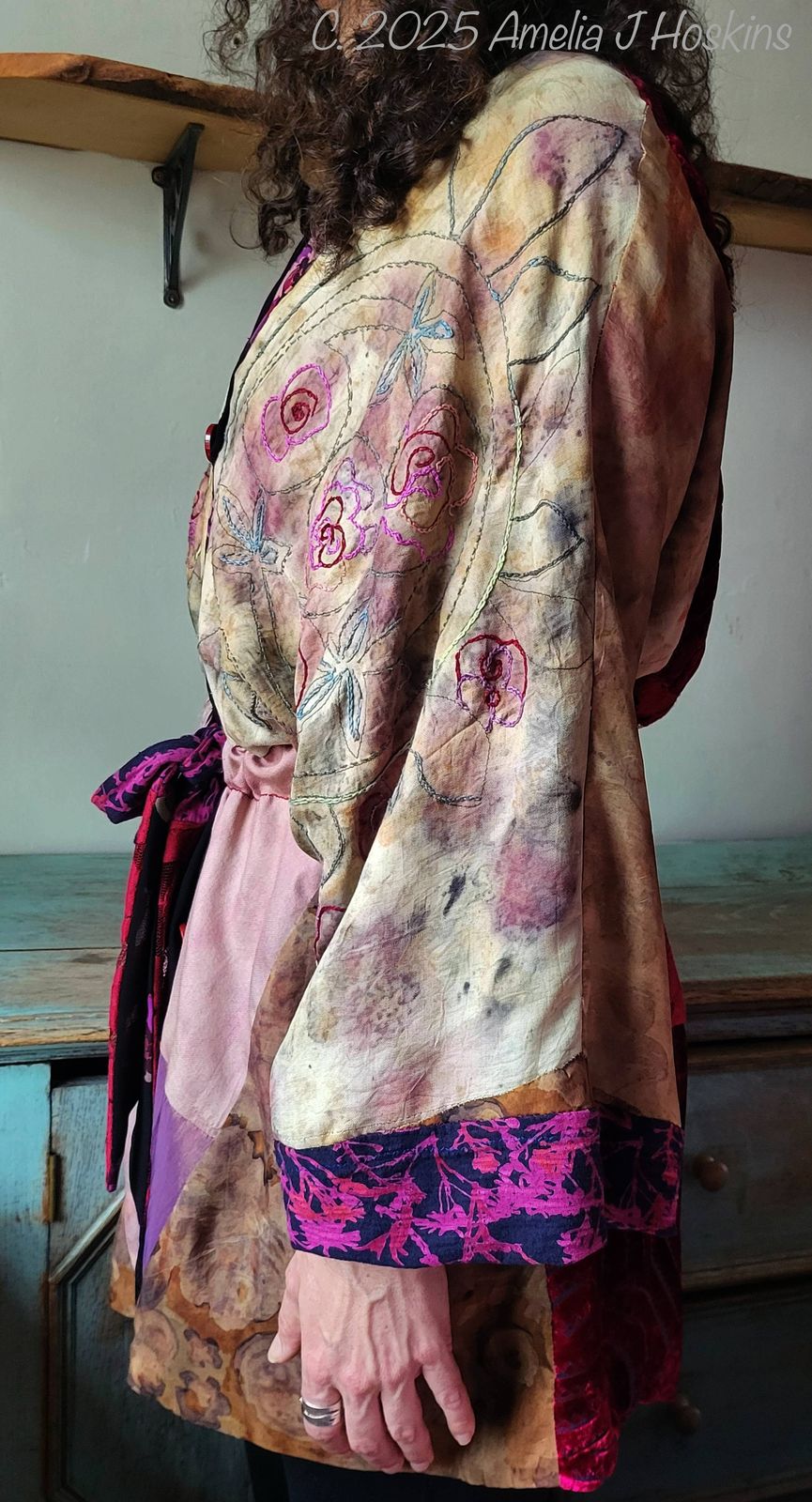

Celtic Raspberry Rose Kimono right side and back
SILK SLEEVES
View shows differences between front and back kimono dress.
Sleeves have a join following down from shoulder. Different silk bundle dyed outcomes front and back sleeve sides. Front Ahimsa silk embroidered; back Habotai silk eco steamed tones.
Black and pink patched fabrics seen through crimson red lace.
Black and magenta pink cotton jersey sleeve cuff is an extension of the inner sleeve lining, echoing the pinks used on dress back. Its always a matter of what fabrics I have in stock to coordinate with.
Model 'Rose' is quite tall. shorter people would find the dress sits on or just above knee.
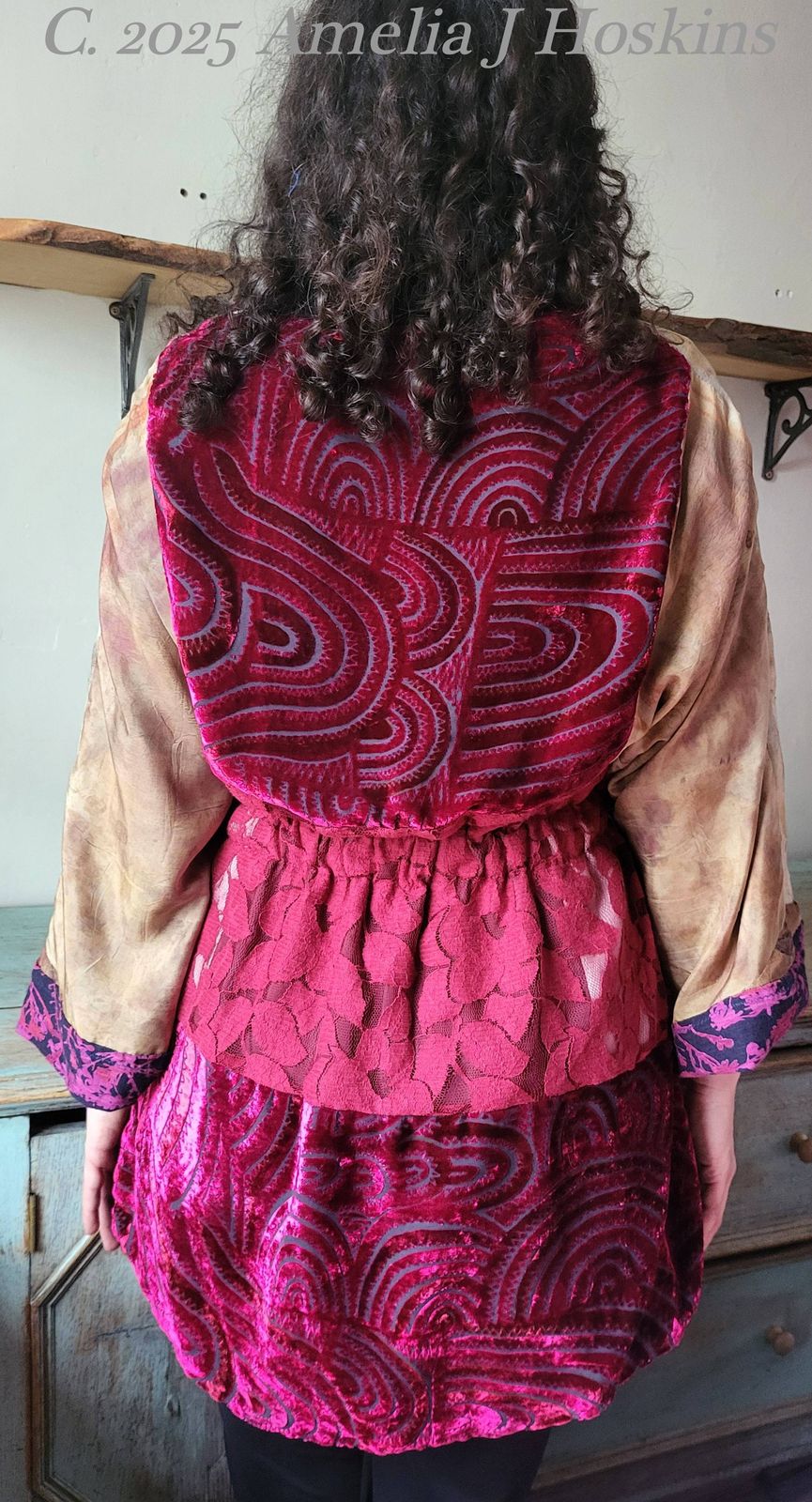
Vivid Magenta velvet devore and crimson cotton lace add a sumptuous tone to the lighter mottled front silks
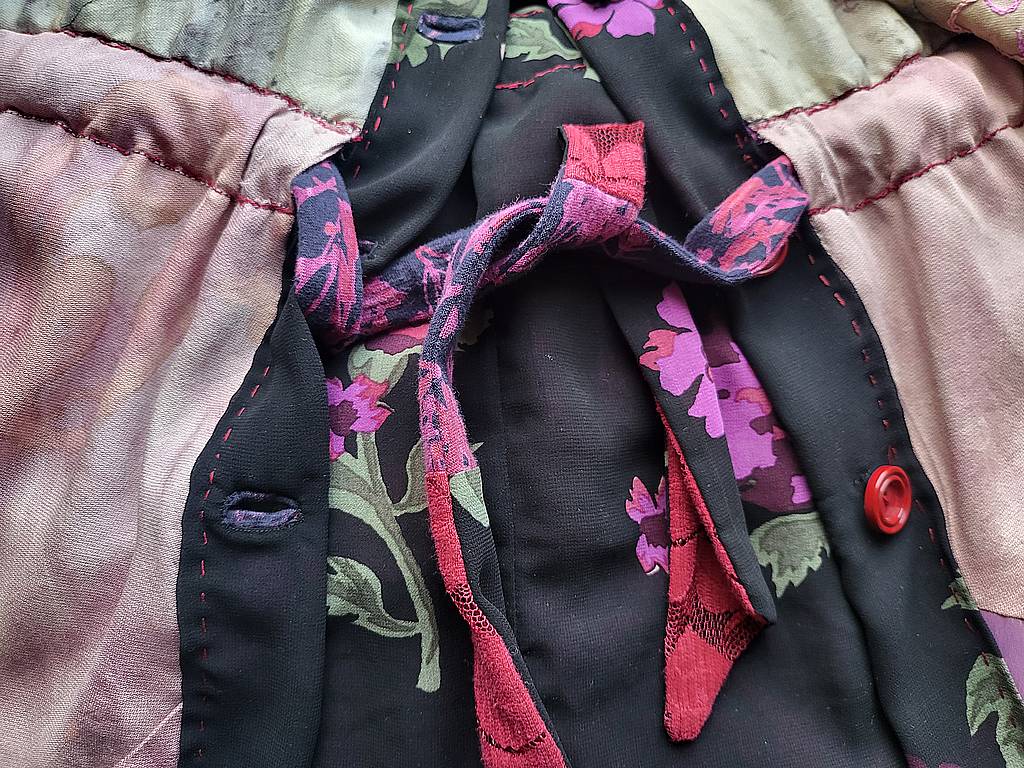
LINING
Garment is built around an existing black/pink roses polyester printed lining which provides the collar and front buttoning section; i.e. the original front welt is used for front welt on kimono dress, and one side of the sash belt, which threads around waist and having back part elasticated. New buttons and bound button holes added. Pink silks either side of front are blackberry dyed.
Celtic Raspberry Rose Kimono Silks
Original source for Celtic Triskele design was formalised geometric plant forms within a sphere. On this silk they are not geometrically exact; the spheres have more loose design, left so to enable simplified embroidery areas. Shapes within Triskeles have been modified with lemon juice to discharge some of the left over dye colour, and to create definition in the design.
Embroidery Designs Over Eco -Dyeing
Silks Ahimsa - Chain stitch follows the outlines of the discharged Triskeles. Original development of colour on the Ahimsa silk at bottom of this page. Freestyle 'roses' are created within the Triskele design. Silk Habotai bundle dyed and modified to create appearance of roses, but no embroidery.
Celtic Triskele shapes are seen painted on with lemon juice to discharge through the blackberry and multi plant eco-dyed and steamed Ahimsa silk
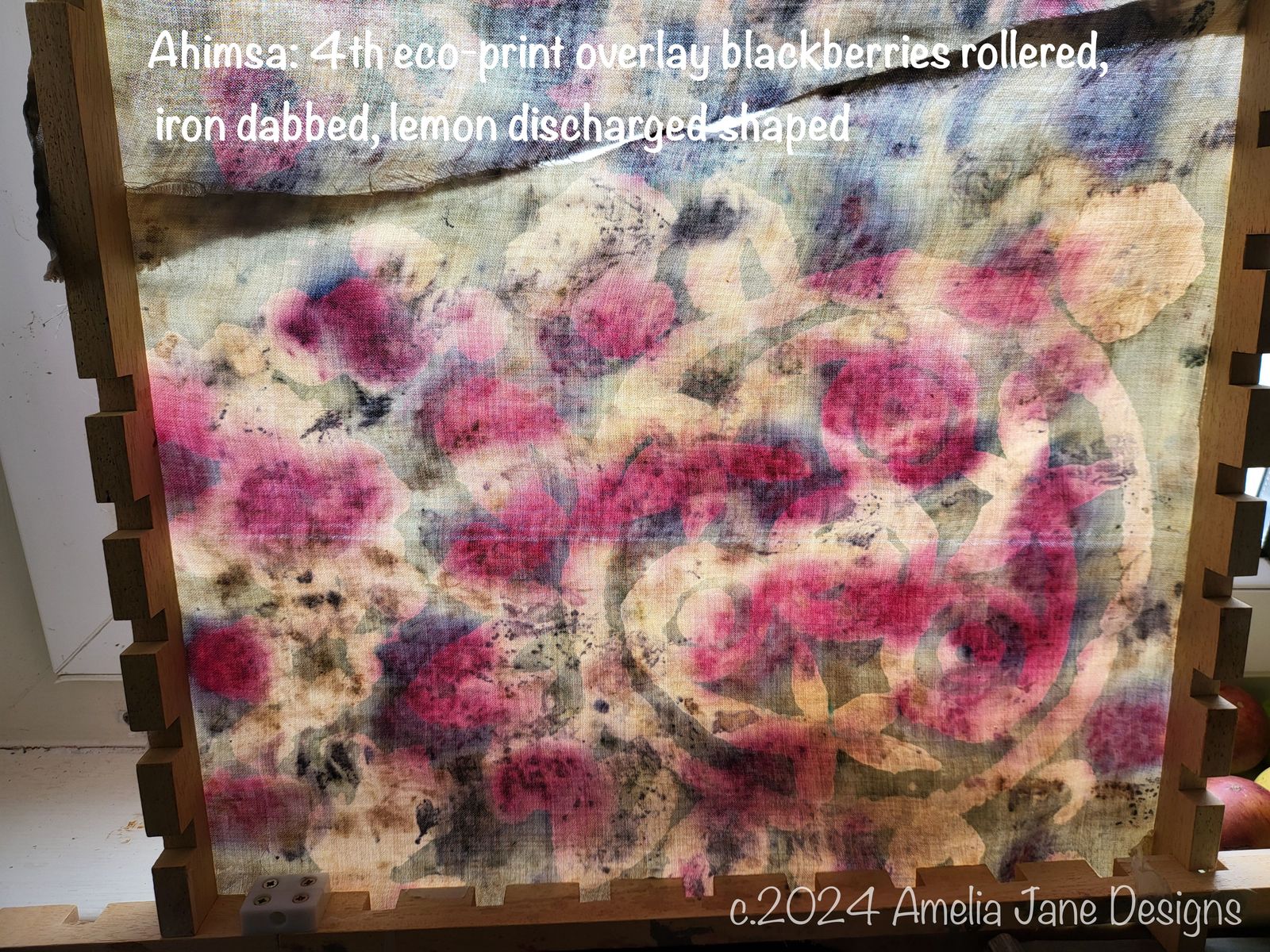
This is the start of ideas to design specific coloured shapes over eco prints, to be afterwards modified to change dyed colours, and embroidered over with details. I created the 'rose' shapes where there would have been more circular triskele designs within the larger triskele. i.e. I have modified the design taken from Celtic designs: also used in wool scarf. (below)
